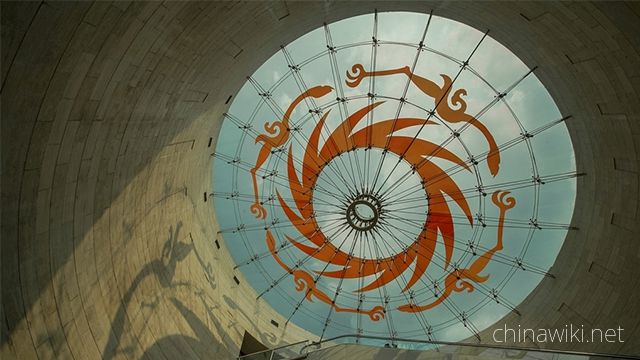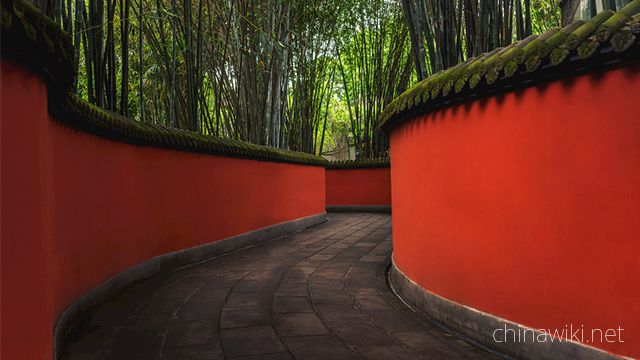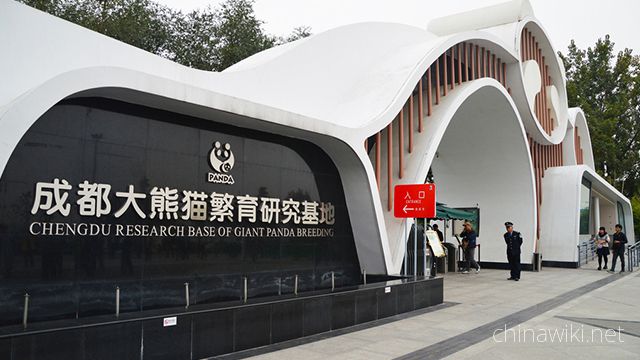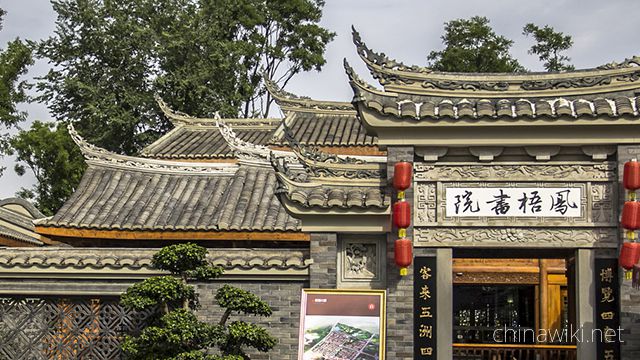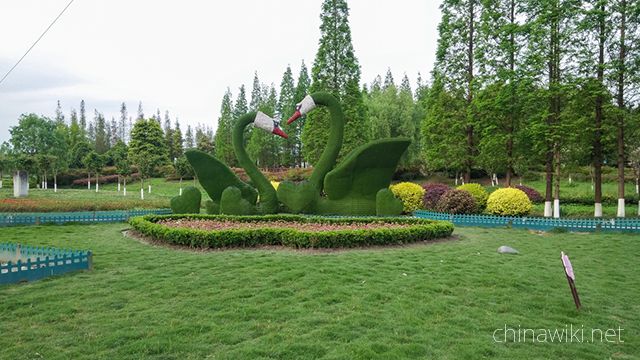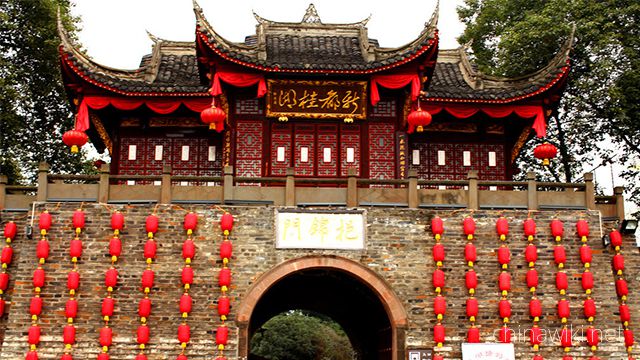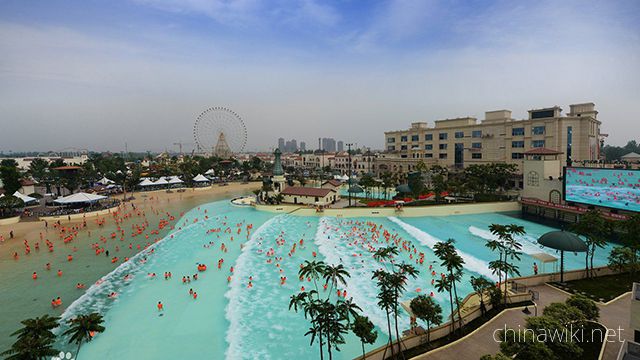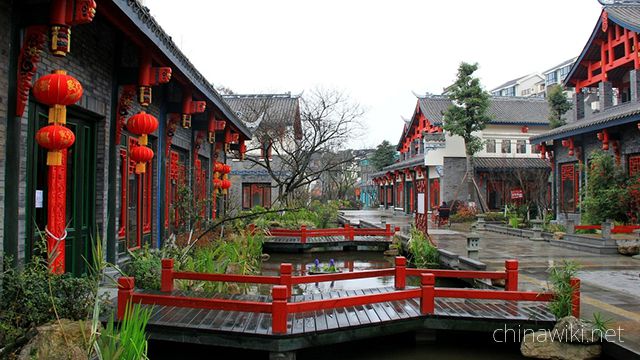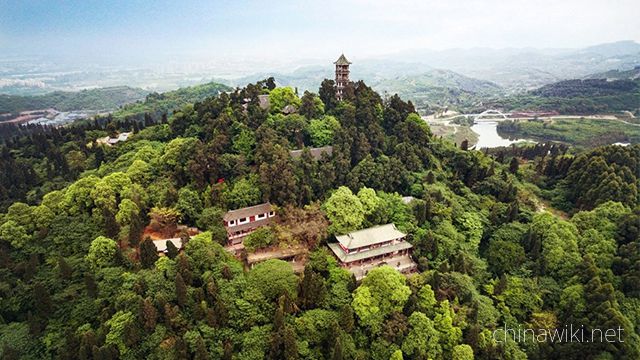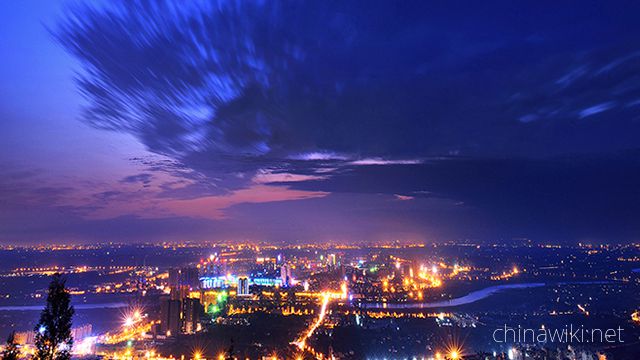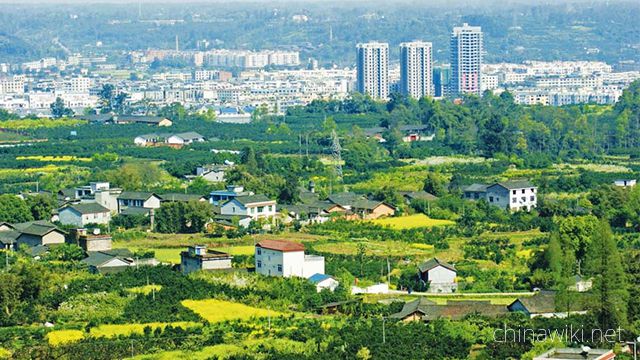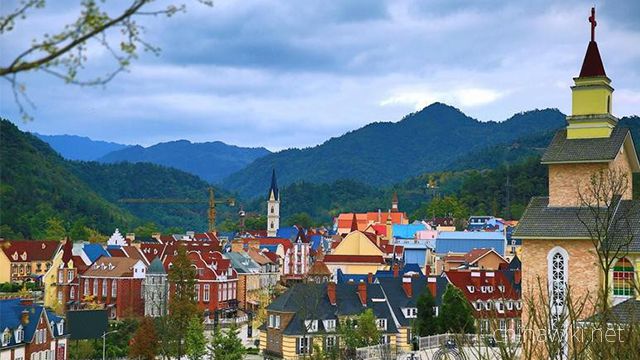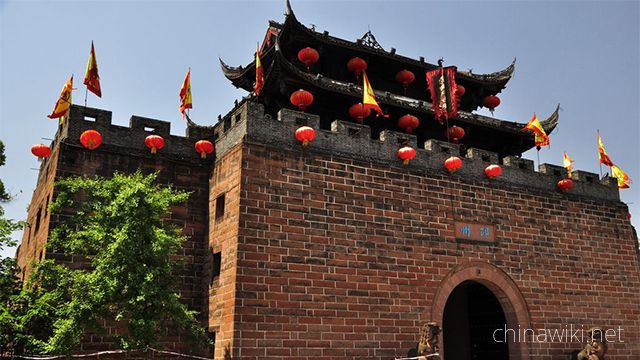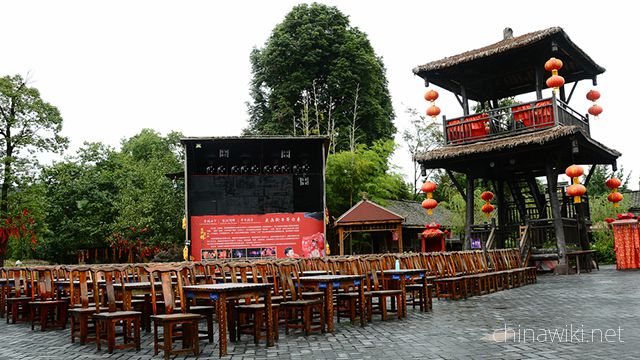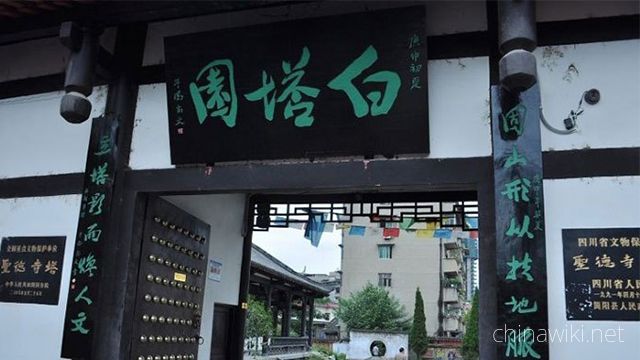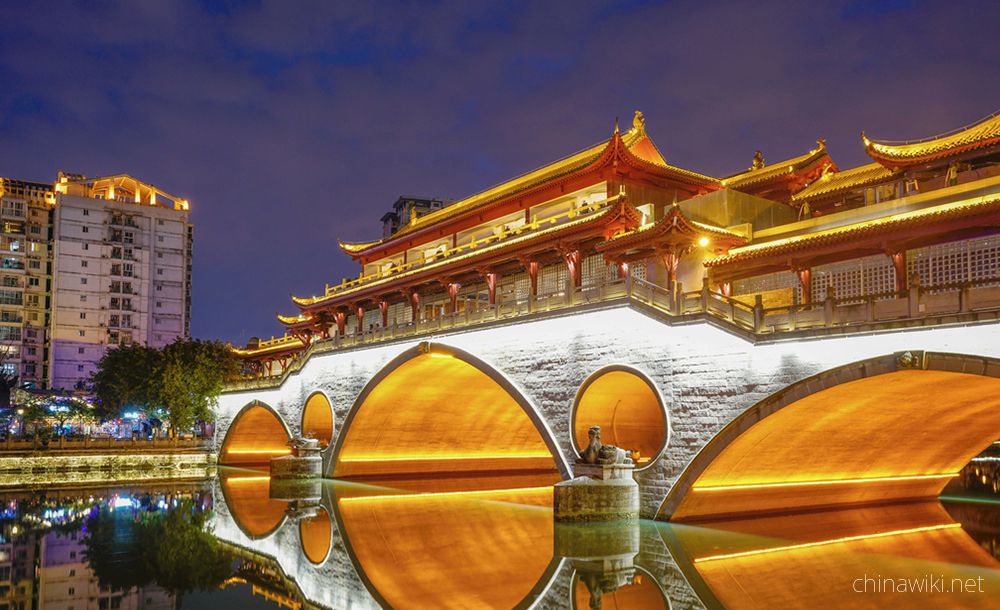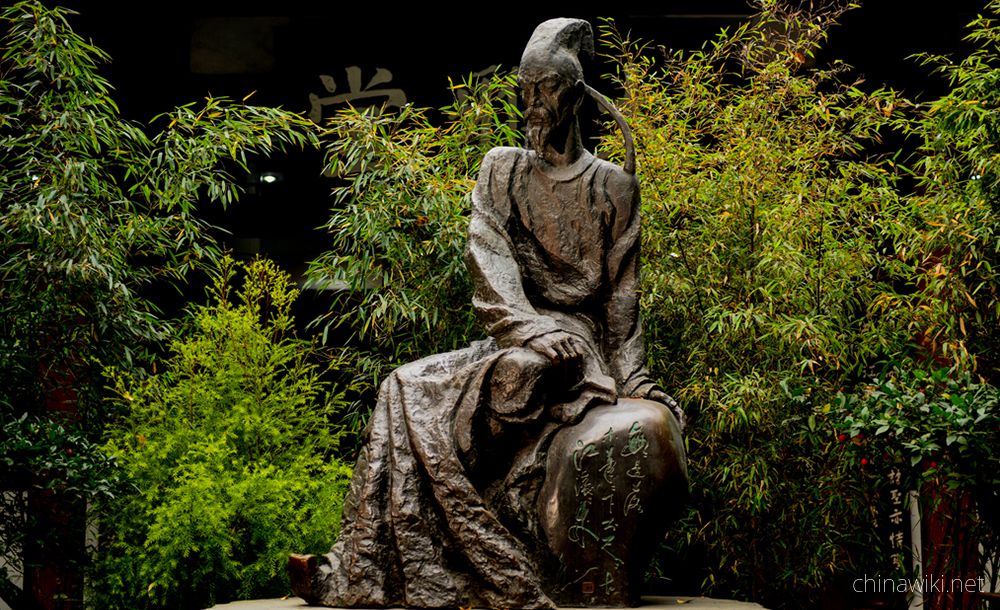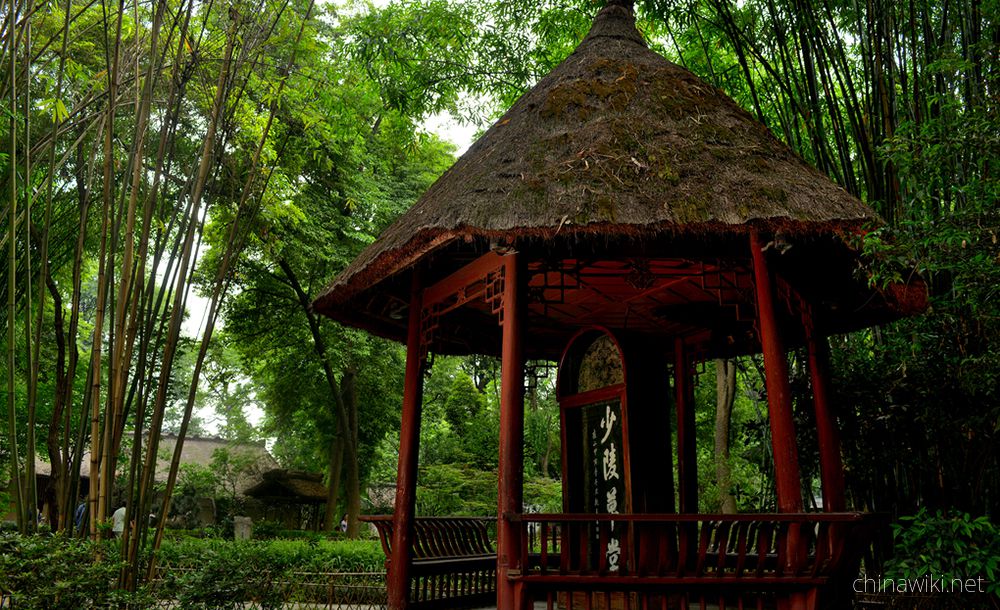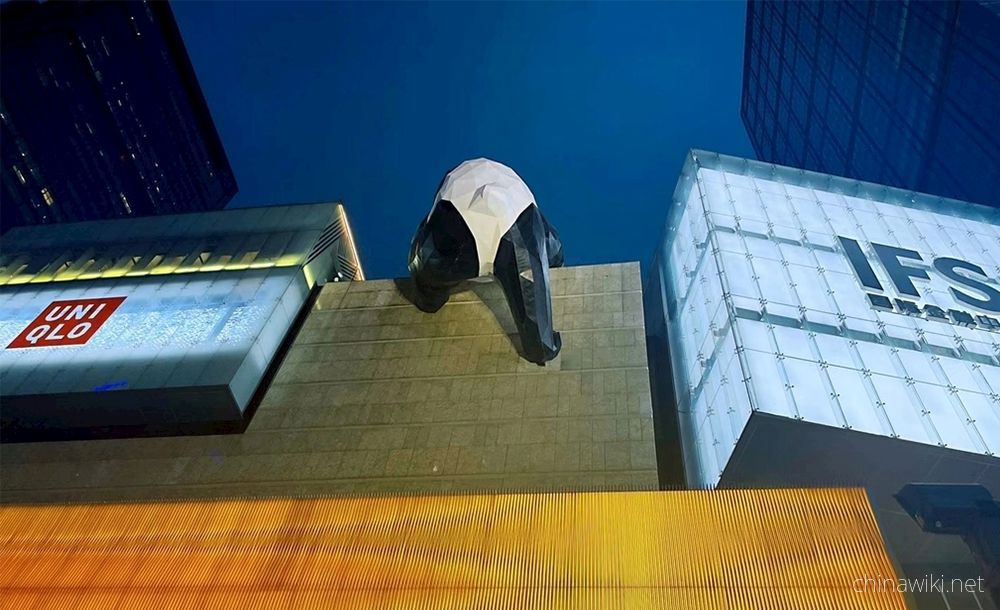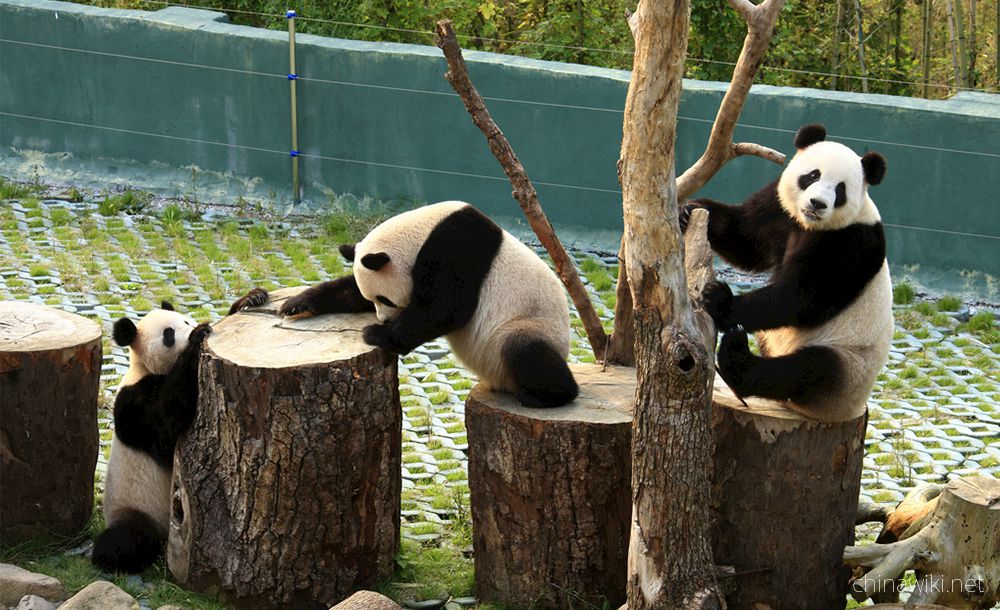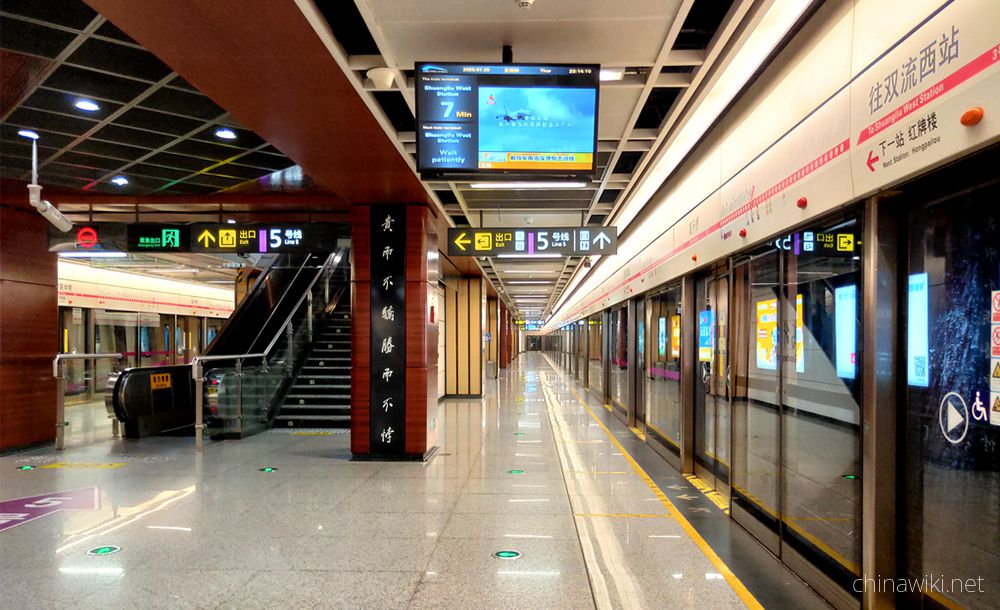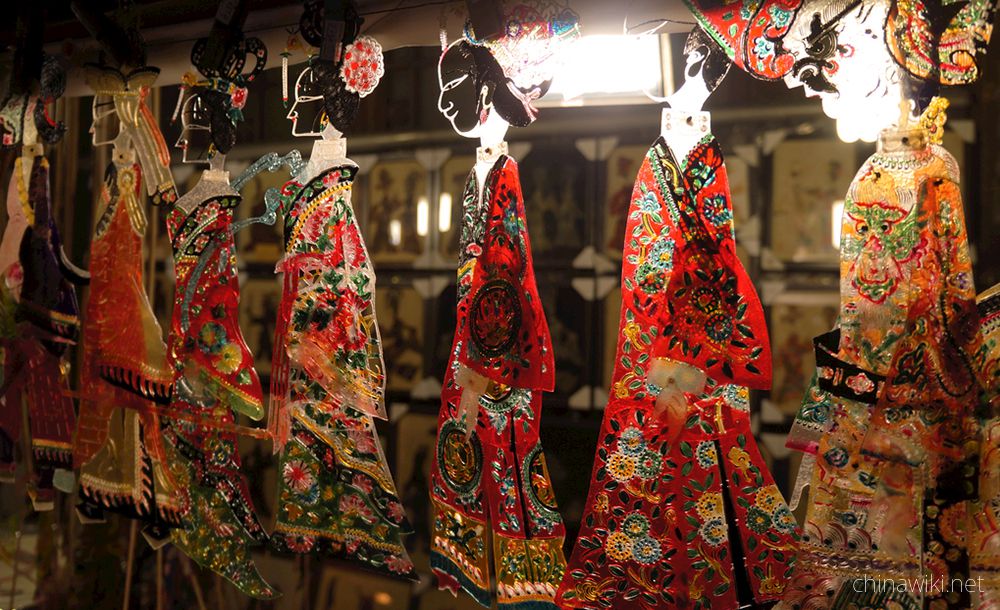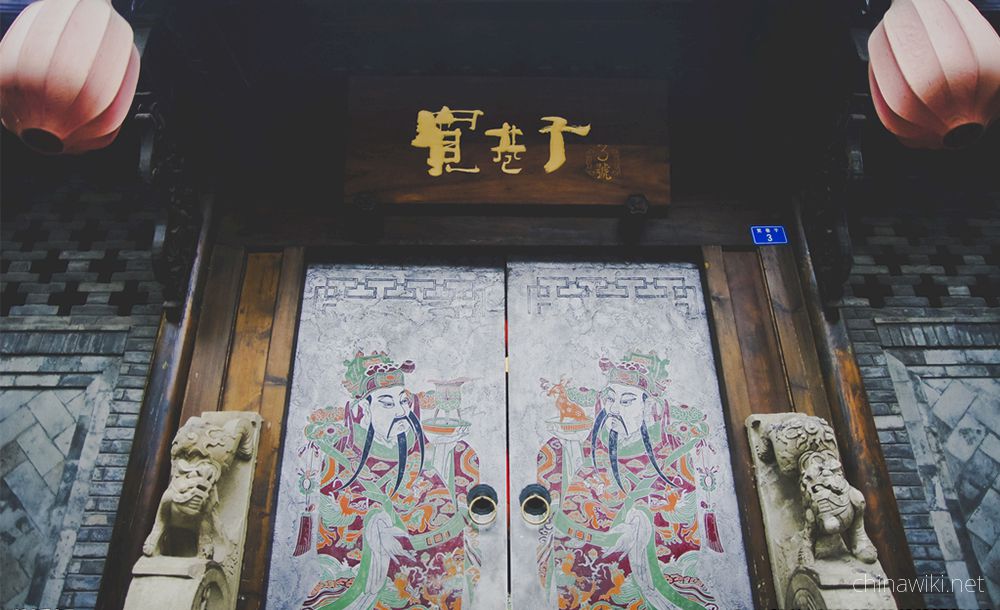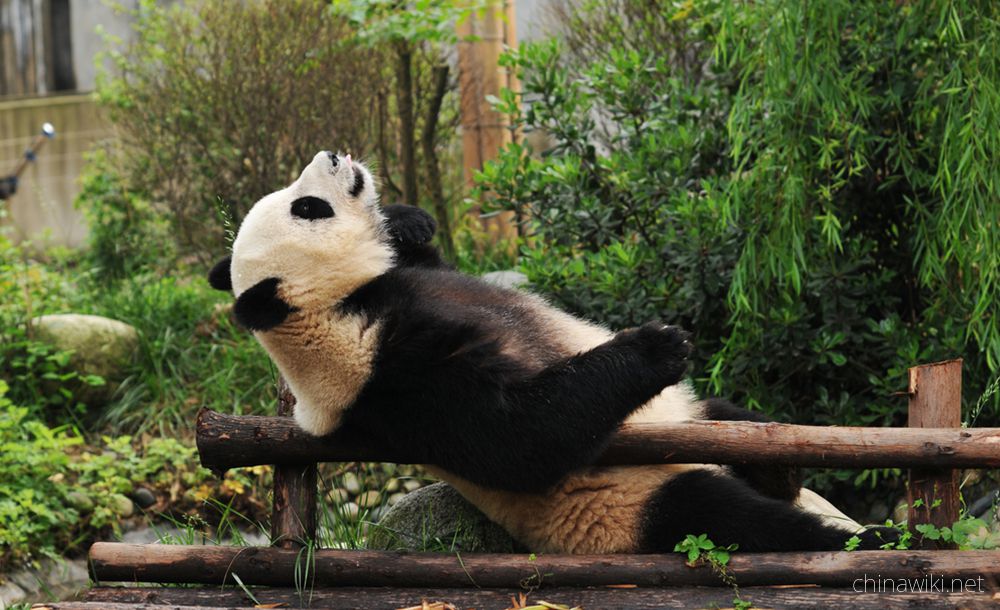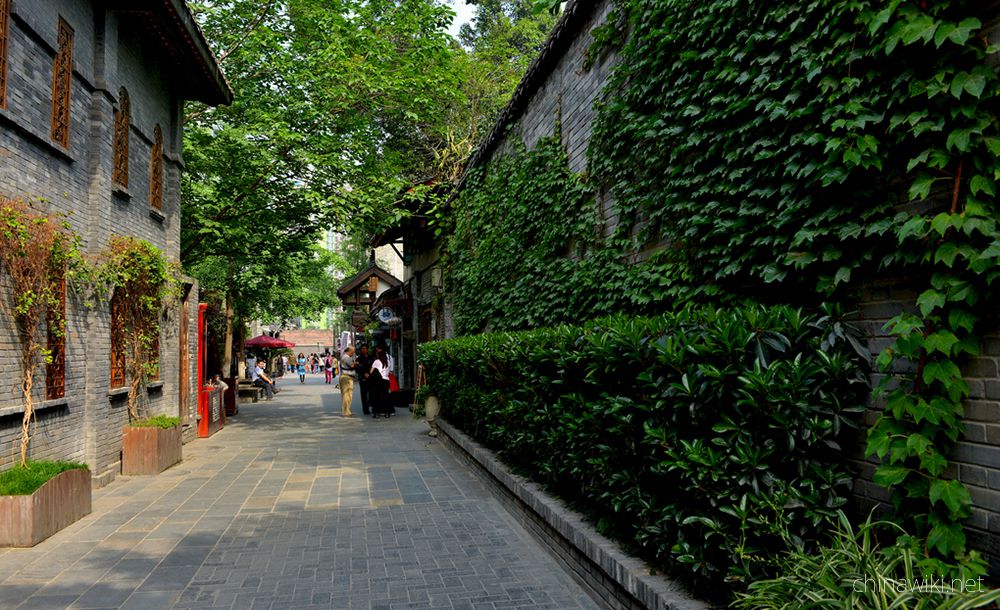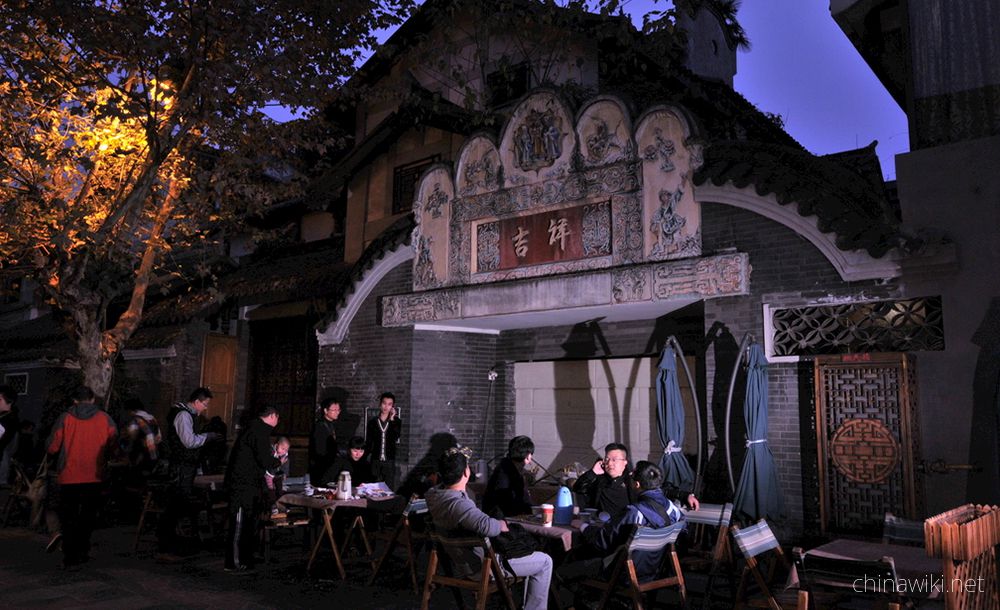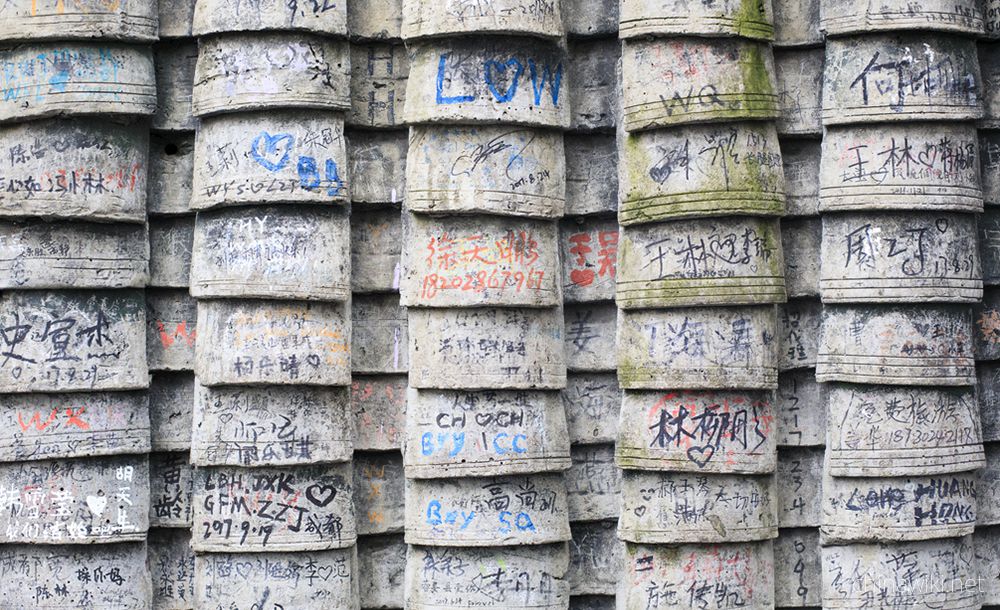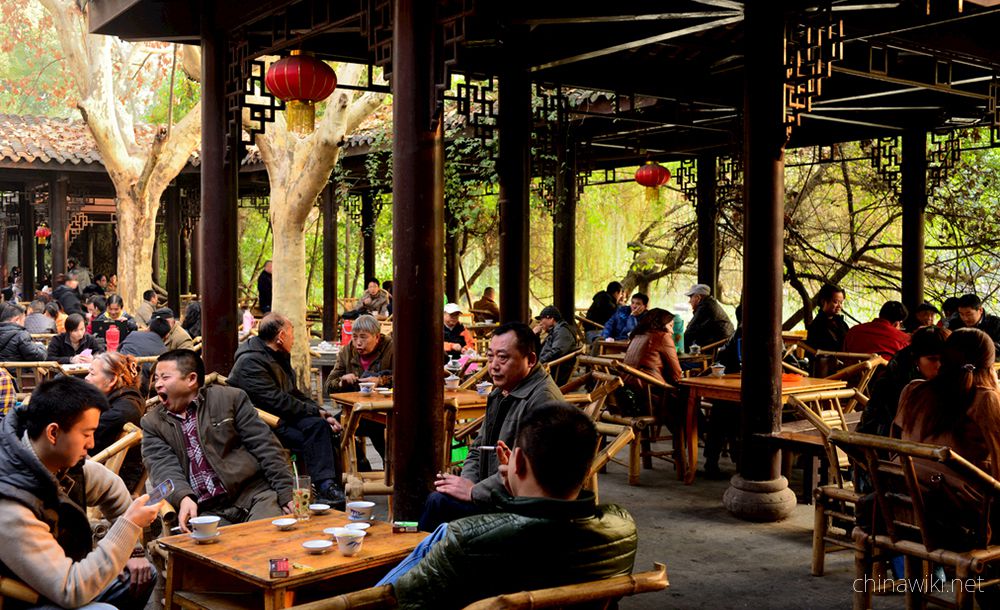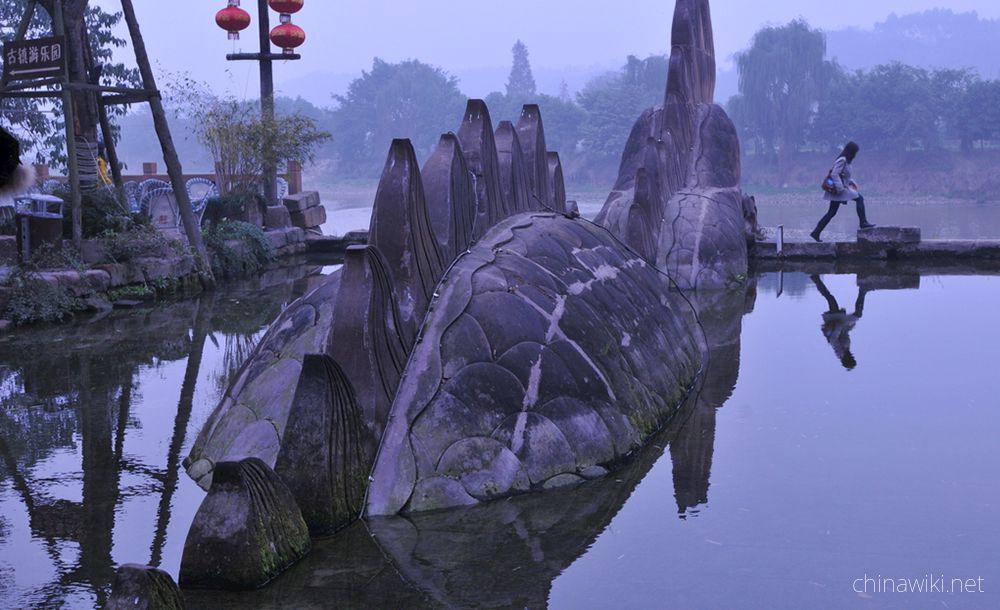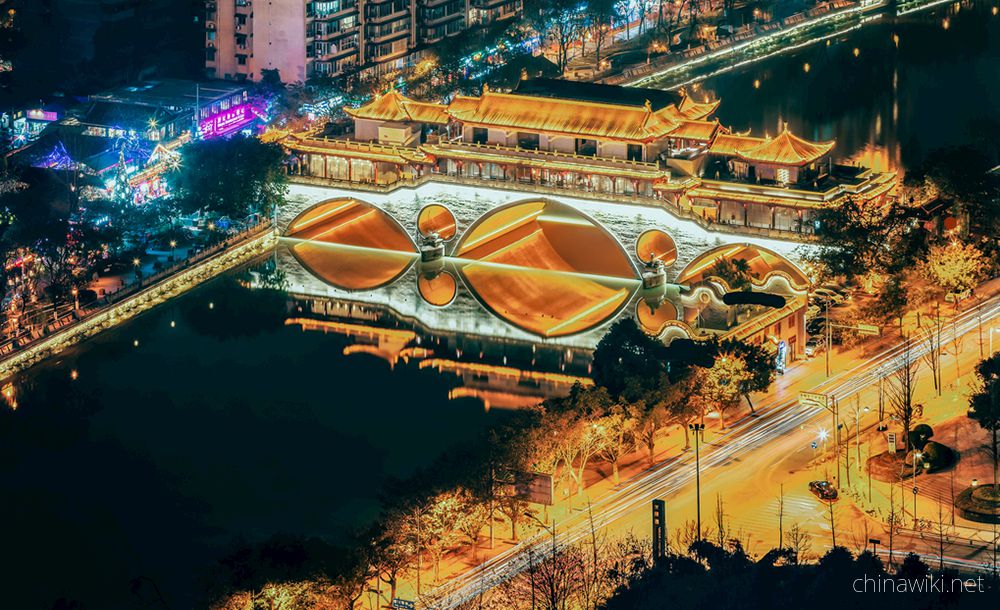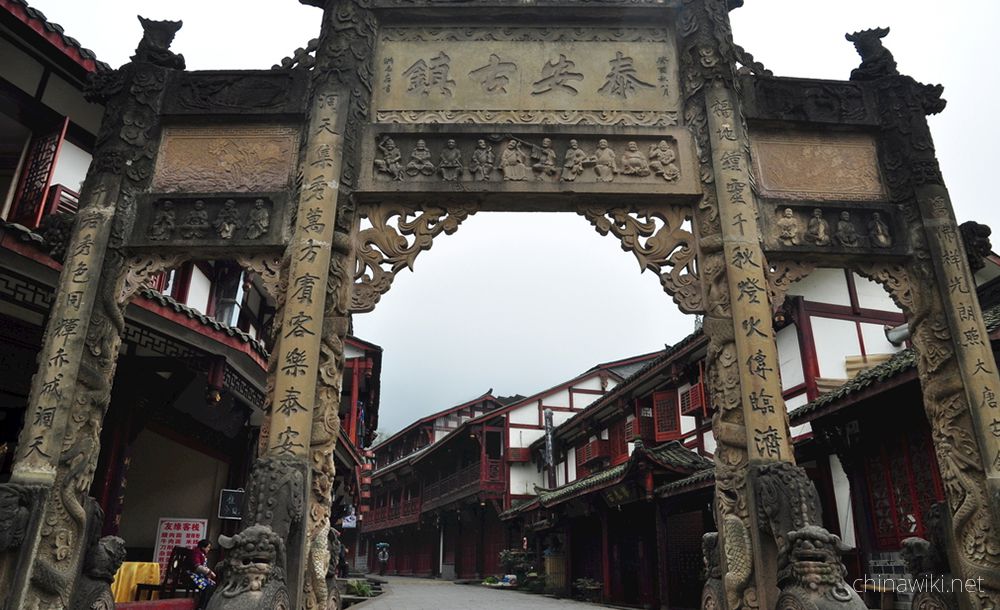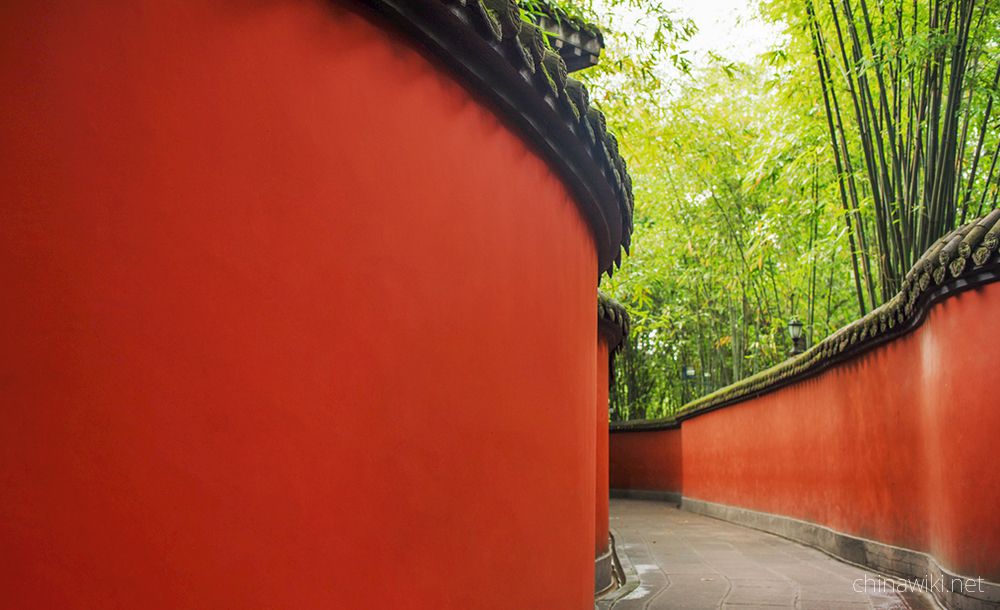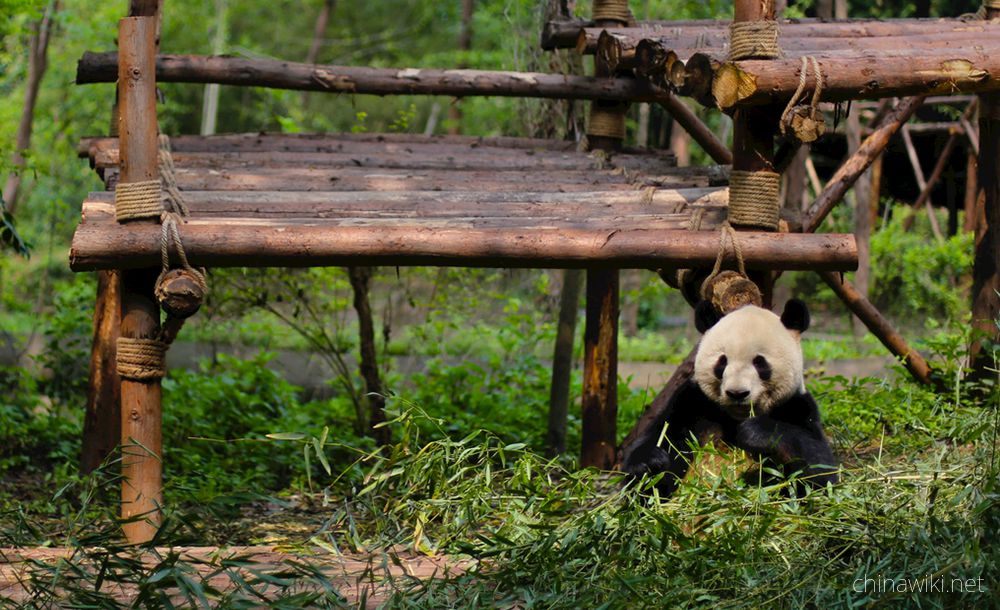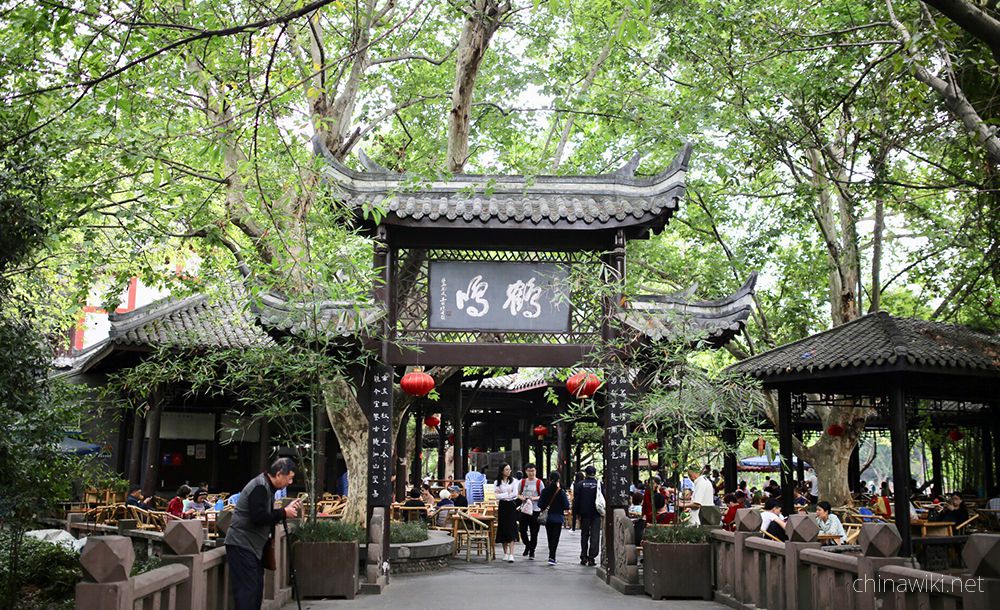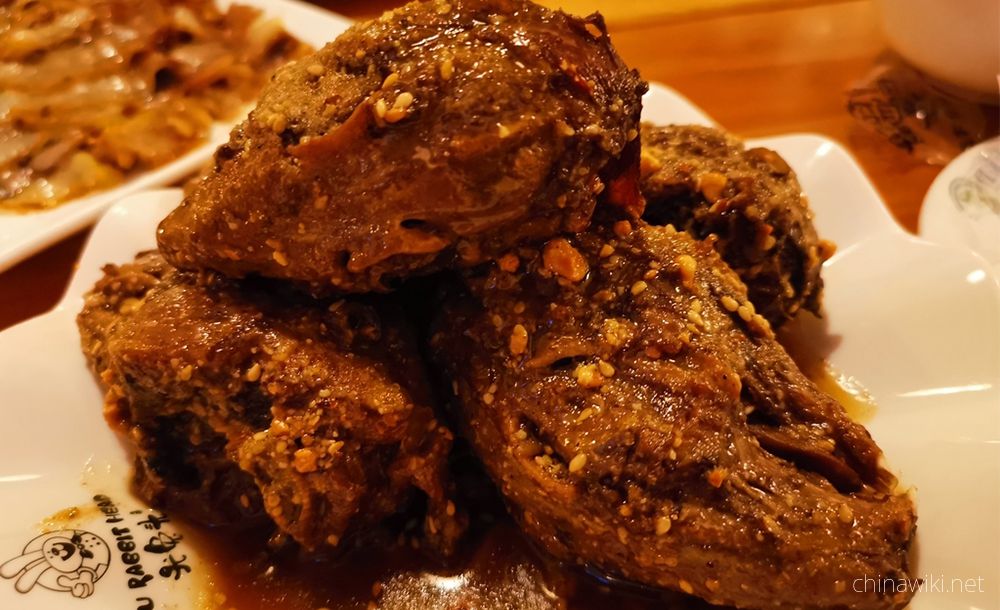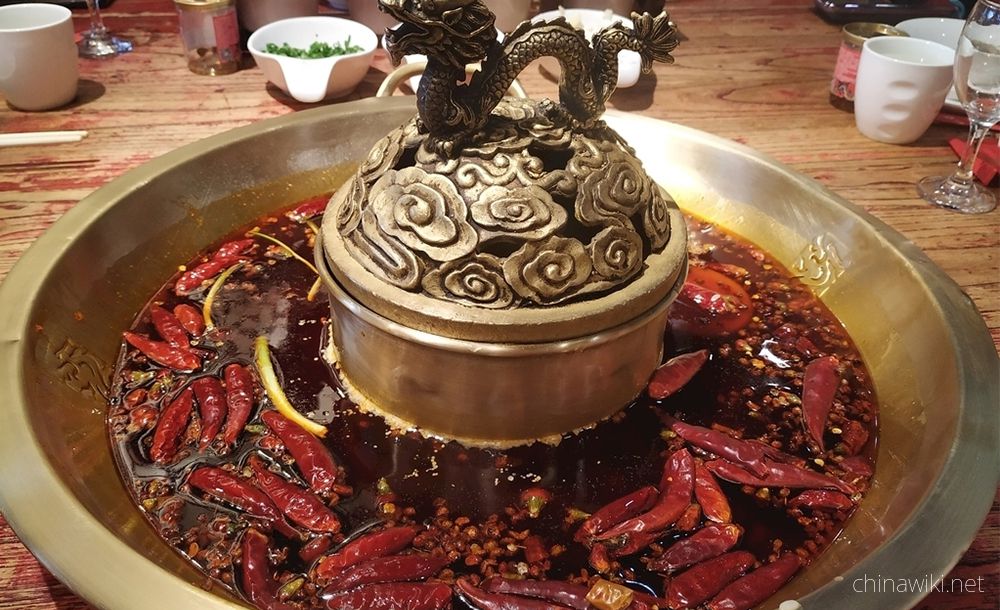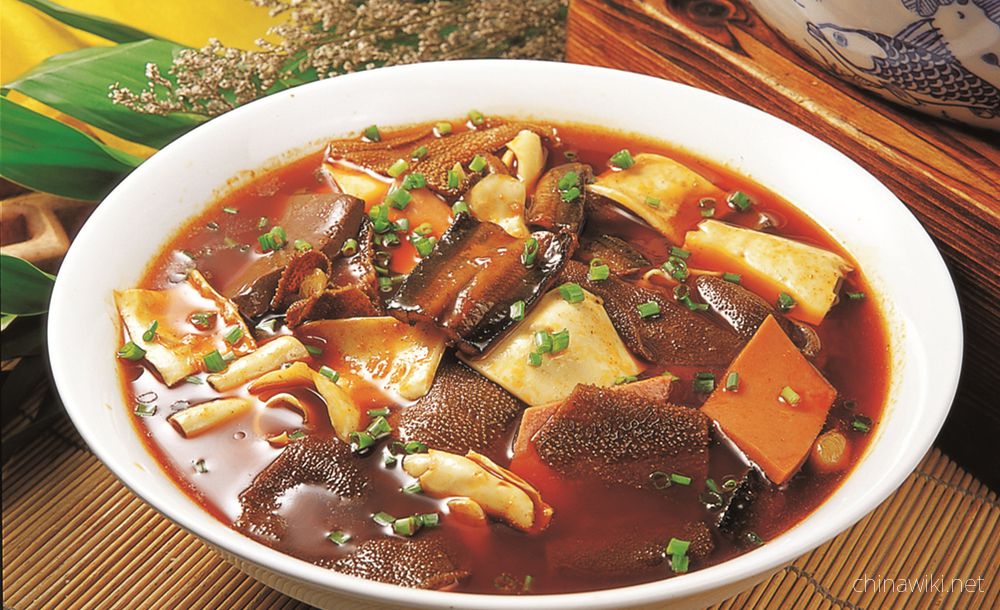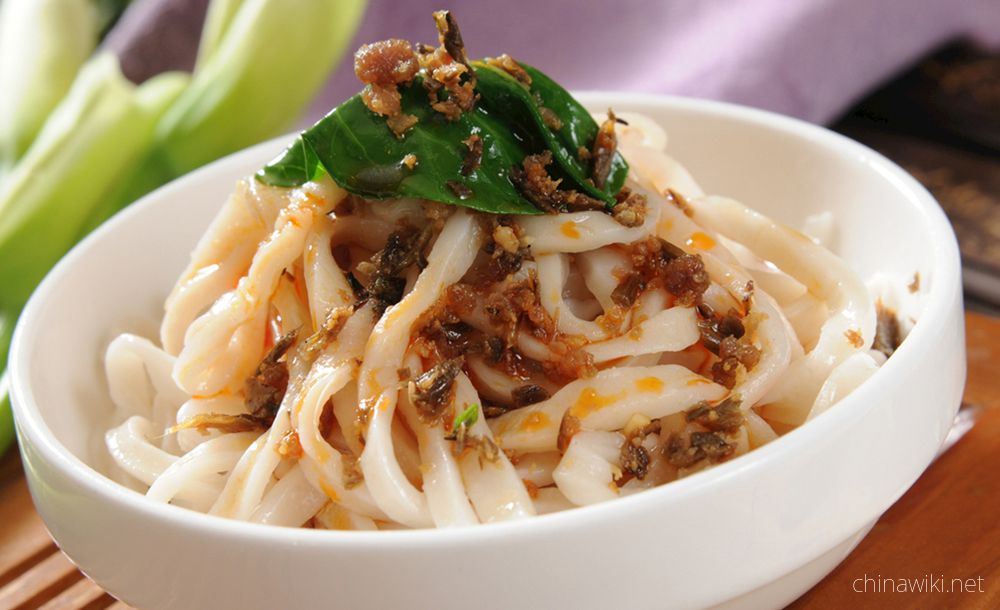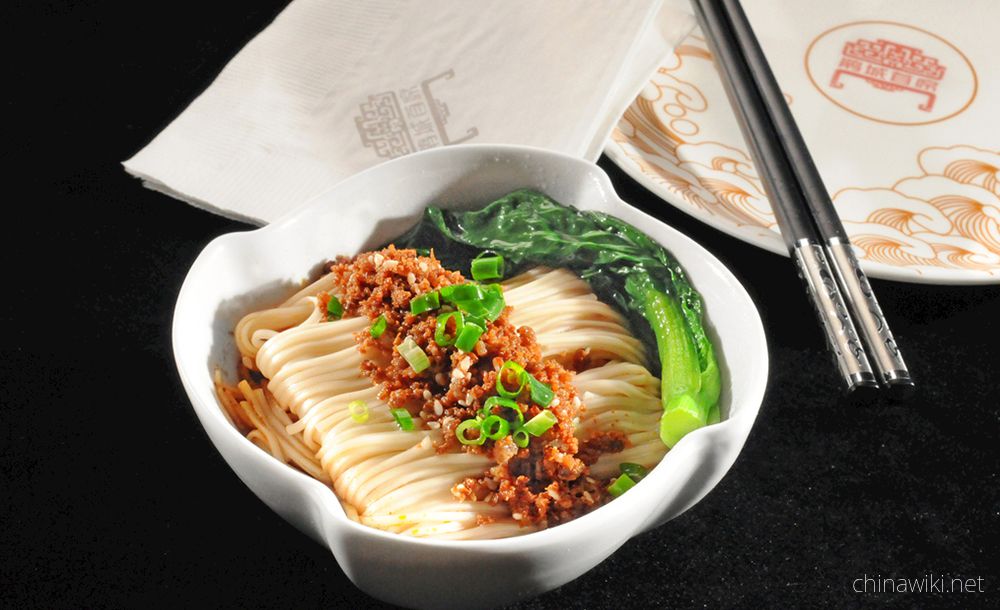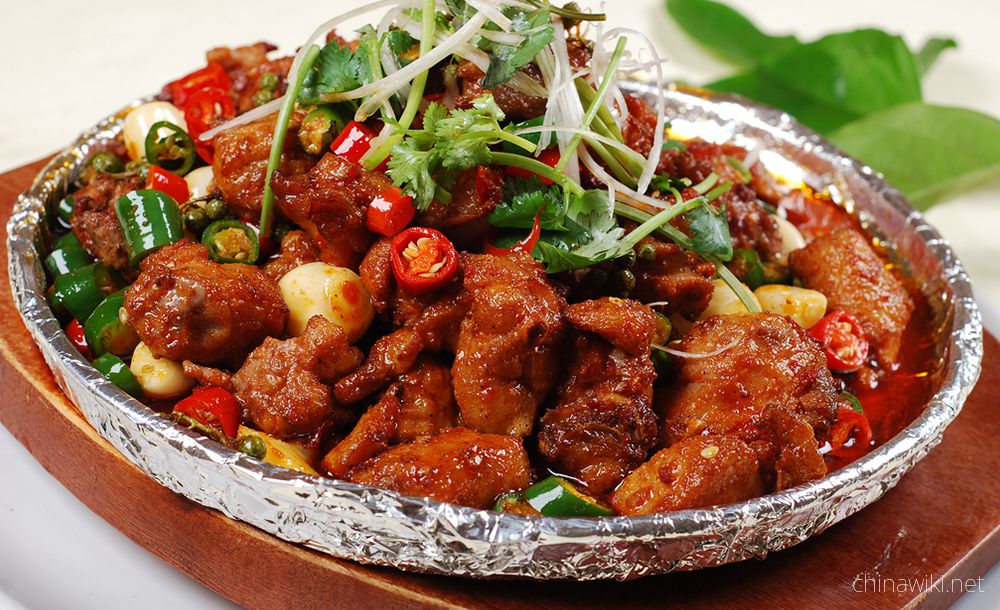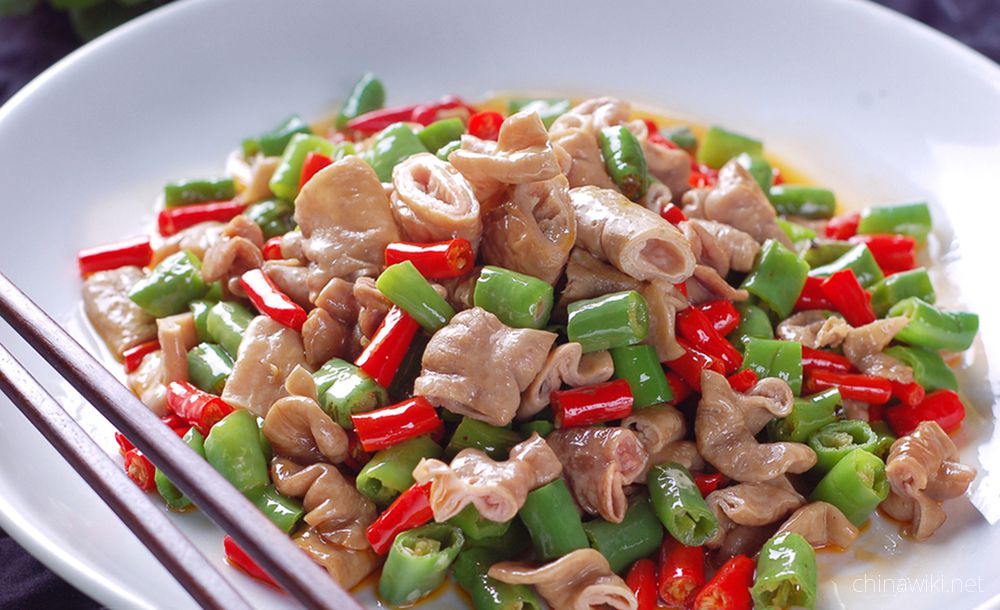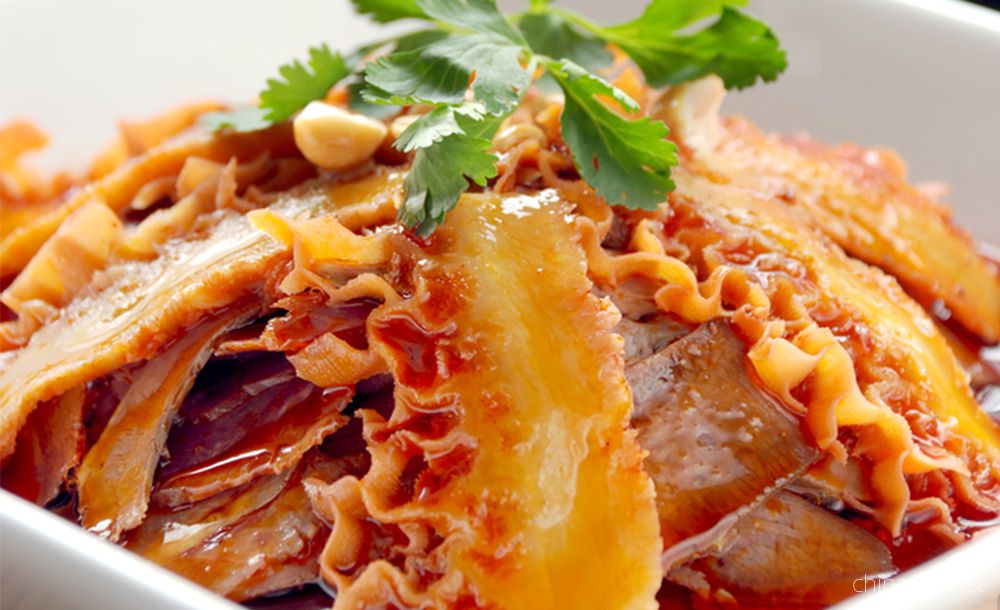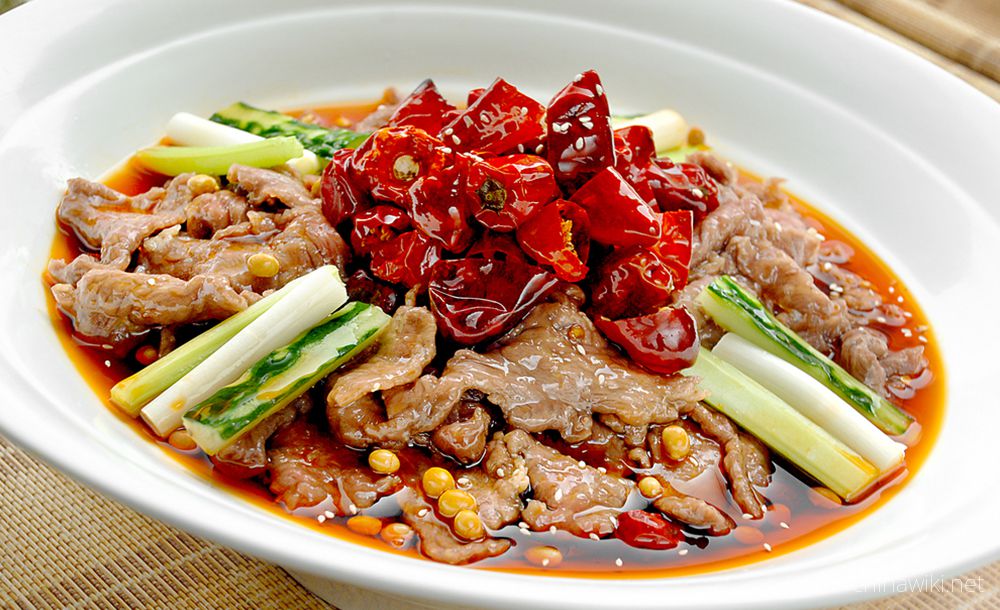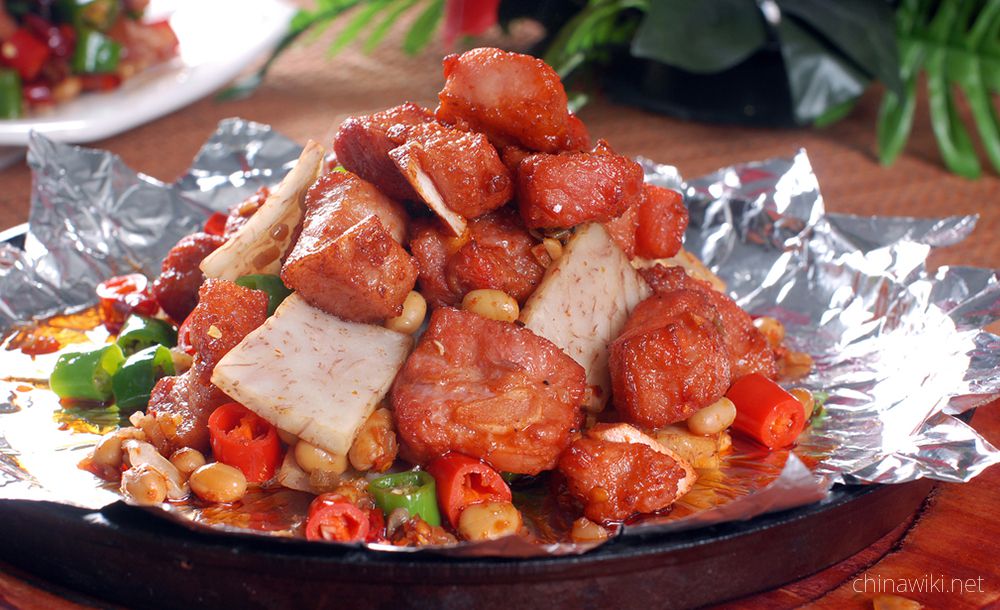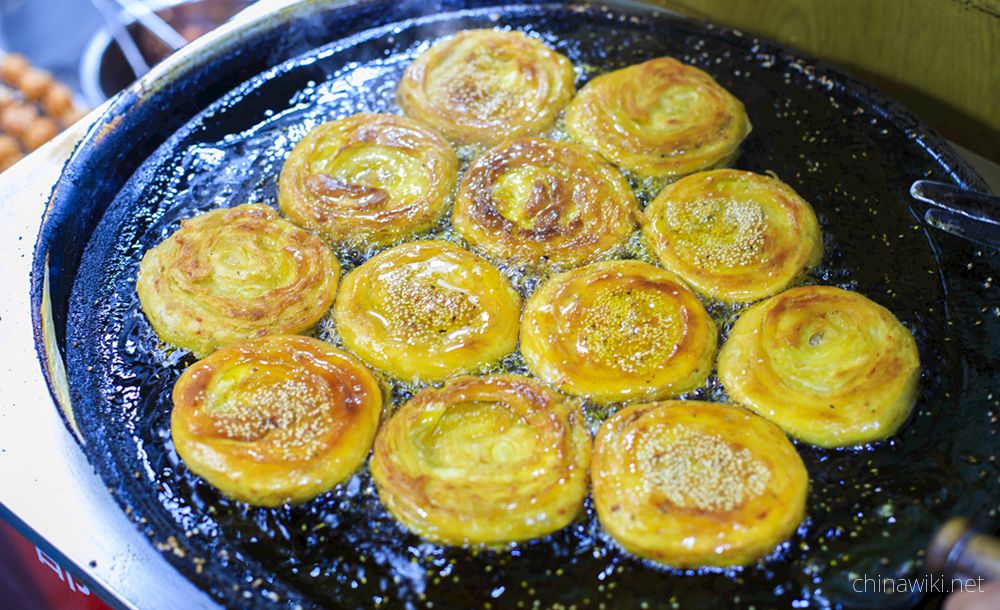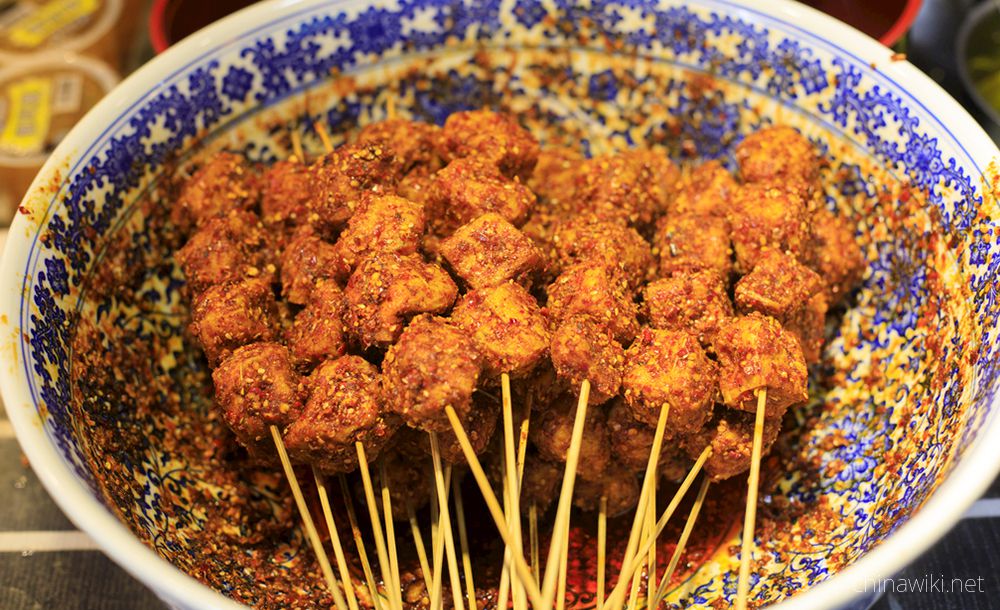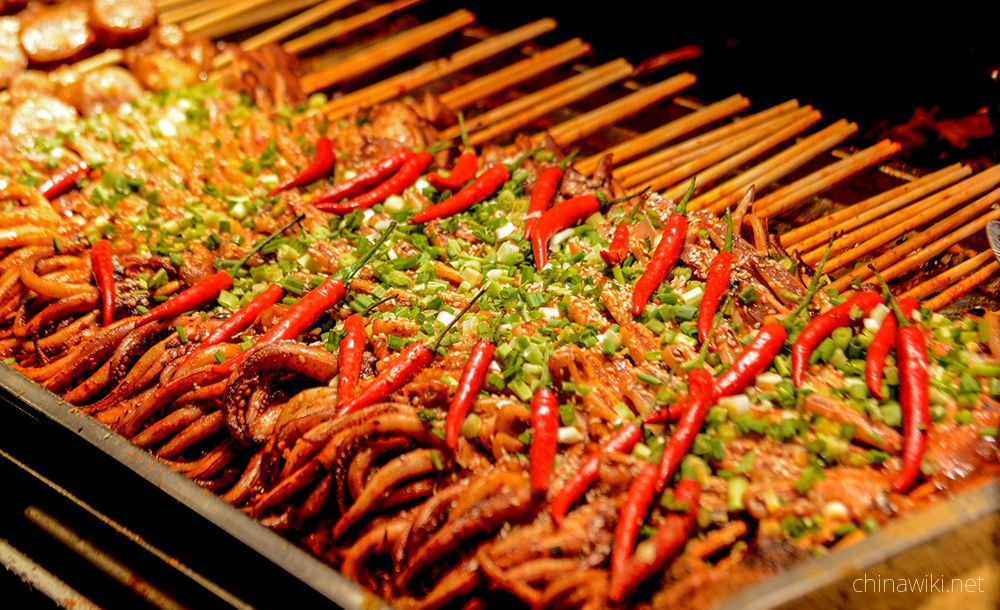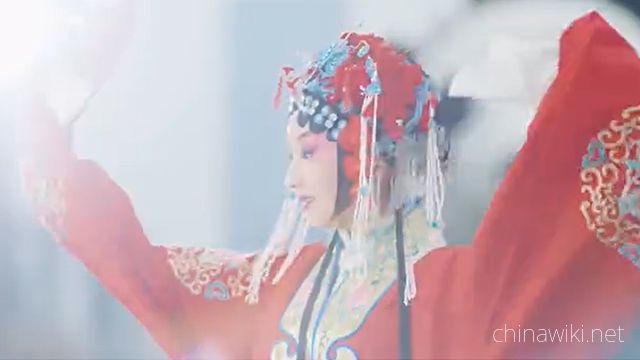Chengdu
Chengdu, referred to as "Rong", also known as Rongcheng and Jincheng, is a prefecture level city under the jurisdiction of Sichuan Province. It is the capital of Sichuan Province, a vice provincial city, a mega city, and the core city of Chengdu Chongqing dual city economic circle. It is an important central city in Western China approved by the State Council, as well as an important national high-tech industrial base, trade logistics center, and comprehensive transportation hub. As of 2019, Chengdu has 12 municipal districts, 3 counties and 5 county-level cities under its jurisdiction, with a total area of 14335 square kilometers. As of 0:00 on November 1, 2020, Chengdu has a permanent resident population of 20937757.
Chengdu is located in Southwest China, the west of Sichuan Basin and the hinterland of Chengdu Plain, with flat terrain, crisscross river network, rich products and developed agriculture. It has a subtropical monsoon humid climate. It has been known as "the land of abundance" since ancient times. It is the airport station of the western war zone of the Chinese people's Liberation Army. As an important electronic information industry base, it has 30 national scientific research institutions, There are 67 national R & D platforms, 65 universities, and 301 Fortune 500 enterprises in 2019.
Chengdu is one of the top ten ancient capitals in China, one of the first batch of national historical and cultural cities, and the birthplace of ancient Shu civilization. Jinsha site in the territory has a history of 3000 years. King Tai of Zhou Dynasty named Chengdu as "gathering in one year, city in two years and Chengdu in three years"; Shuhan, Chenghan, Qianshu and houshu established their capitals here successively; It has always been the prefectural government of each dynasty; Han Dynasty is one of the five major cities in China; Tang Dynasty is one of the most developed industrial and commercial cities in China; The Northern Song Dynasty is the second metropolis outside Bianjing. It invented the first paper money jiaozi in the world. With Dujiangyan, Wuhou Temple, Dufu thatched cottage and other places of interest, it is the best tourist city in China.
In 2020, Chengdu's GDP will reach 1771.67 billion yuan, an increase of 4.0% over the previous year at comparable prices.
| Chinese name | Chengdu |
| Foreign name | Chengdu |
| alias | Chengdu, Jincheng, Furong, Jinguan and Tianfu |
| area number | 510100 |
| Category of Administrative Region | Prefecture level city |
| Region | Sichuan Province |
| geographical position | Southwest China, middle reaches of Minjiang River, hinterland of Chengdu Plain |
| the measure of area | 14335km ² |
| Jurisdiction area | There are 12 municipal districts, 5 county-level cities and 3 counties |
| Government residence | No.2, Jinyue West Road, Guixi street, Chengdu |
| Area Code | 028 |
| zip code | 610000 |
| climatic conditions | Subtropical monsoon humid climate |
| Famous scenic spot | Dujiangyan, Qingchengshan, Dufu thatched cottage, Wuhou Temple, Jinsha site, Qingyang palace, giant panda breeding research base, Kuanzhai alley, Chunxi Road, Dongjiao memory |
| airport | Chengdu Shuangliu International Airport, Chengdu Tianfu International Airport |
| train station | Chengdu Railway Station, Chengdu east railway station, Chengdu South Railway Station and Chengdu West Railway Station |
| License plate code | Sichuan a, Sichuan G |
| Gross Regional Product | 1771.67 billion yuan (2020) |
| GDP per capita | 103386 yuan (2019) |
| City flower and city tree | Hibiscus, gingko |
| institutions of higher education | Sichuan University, University of Electronic Science and technology, Southwest Jiaotong University, Southwest University of Finance and economics, etc |
| population | 20937757 (permanent resident at 0:00 on November 1, 2020) |
Historical evolution
The origin of the name
According to the records of Taiping Huanyu, the origin of "Chengdu" is based on the historical process of the establishment of the capital of the Western Zhou Dynasty. Wang Qianqi of the Zhou Dynasty was chosen as his residence in one year and became the capital of Shu in two years and Chengdu in three years. The pronunciation of Chengdu is the capital of Shu. Chengdu means the end of Shu, or the last capital.
History of construction
In the early period, it was the place of Baipu. According to the records of Huayang state, "Yueyi county will be the place where Pu lived, and there are tombs of Pu people."《 It is said in the historical records of Chu aristocratic family that (King Wu of Chu) began to open the land of PU. In the south of Jianning County, there were Pu Yi. Pu Yi had no leader and president. They gathered in their own cities, so they were called Bai Pu Ye
Around the middle of the 5th century B.C. (367 B.C.), the Kaiming king of the ancient Shu state moved the capital from guangdufan township (Huayang) to Chengdu to build a city.
In the fourth year of Shenwang in the Eastern Zhou Dynasty (316 BC), the state of Qin annexed Shu and set up Shu Prefecture in Chengdu. Qin Zhangyi and simacuo built Taicheng (Funan city). The next year, Zhangyi built Shaocheng (Fuxi city) to the west of Taicheng.
In the 51st year of emperor Zhaoxiang of Qin Dynasty (256 BC), Li Bing, the prefect of Shu County, absorbed the experience of predecessors in water control and led the local people to build the famous Dujiangyan water conservancy project which is still in use today. He also made stone men to measure the water of Dujiangyan, which is the earliest water gauge in China. At the end of Qin Dynasty and the beginning of Han Dynasty, Chengdu replaced Guanzhong and was called "Tianfu".
Sketch map of the artificial lake "Mahachi" of Sui Dynasty discovered in the adult center of Chengdu Institute of cultural relics and Archaeology
Sketch map of the artificial lake "Mahachi" of Sui Dynasty discovered in the adult center of Chengdu Institute of cultural relics and Archaeology
In the fifth year of Yuanfeng (106 BC) of the Western Han Dynasty, Emperor Wu of the Han Dynasty divided the world into 13 states and established Yizhou. Wang Mang changed Yizhou to yongbu, Shu county to Daojiang, governing Linqiong. In the 24th year of the new emperor's reign, Gongsun Shu called Chengdu emperor and designated Chengdu as "a family". Yizhou was changed to Sili, and Shu county to Chengdu Yin.
In the Eastern Han Dynasty, it was still Shu county. At the end of the Eastern Han Dynasty, Liu Yan worked as a "Yizhou herdsman" and transferred Yizhou from Luoxian County of Guanghan county to Chengdu, using Chengdu as the prefecture, county and county.
During the Three Kingdoms period, Chengdu was the capital of Shuhan. In the first year of Yankang (220), Cao Pi usurped the Han Dynasty, and in the next year (221), Liu Bei became emperor in Chengdu, Sichuan Province, as a patriarch of the Han Dynasty. The Shuhan regime began with emperor zhaolie Liu Bei and ended with emperor Huaihe Liu Chan. It lasted for 43 years. During its heyday, it occupied Jingzhou and Yizhou, and its national strength was strong. However, after Guan Yu lost Jingzhou and Liu Bei defeated Yiling, its vitality was greatly damaged. Later, Zhuge Liang ruled the country and resumed production, enabling it to compete with Wei and Wu.
Emperor Wu of Jin Dynasty changed Shu county to Chengdu state and soon resumed its title. In the third year of Yongxing (306), Li Xiong became emperor in Chengdu, known as "Dacheng". In the fourth year of Xiankang (338), Li Xiong's nephew Li Shou changed the name of the country to "Han", which was called "Chenghan" in history. In 347, Dacheng was destroyed by the Eastern Jin Dynasty.
After the song and Qi dynasties in the Southern Dynasties, Chengdu was ruled by Yizhou and Shu counties, Taicheng by the governor of Yizhou and Shaocheng by the inner history of Chengdu.
In the second year of kaihuang (582), it was changed to the southwest daoxingtai. The next year, the general manager's office was restored. In the early year of Daye (605), the government was abolished, and Emperor Yang of Sui Dynasty changed Yizhou into Shu county.
Yizhou was restored in the Tang Dynasty, and in the early years of Wude (618), the general manager's office was set up. In the third year of Wude (620), it was changed to southwest daoxingtai. In the ninth year of Wude (626), it was changed into the governor's office. In the second year of longshuo (662), he was promoted to Dufu. In the early years of Tianbao (742), it was restored to Shu county. In the second year of Zhide (757), Emperor Xuanzong of Tang Dynasty was lucky to stay in Shu, and promoted Shu county to Chengdu Prefecture. As Nanjing, he was the auxiliary capital of Tang Dynasty and changed Chengdu prefecture to Yin. At that time, Jiannan road was divided into East and West Sichuan, and Chengdu was the governing place of Jiedushi of Xichuan. In the early years of the Shang Yuan Dynasty (760), the capital was destroyed, but the Chengdu government remained unchanged. In the first year of Guangming Dynasty (880), in order to avoid the chaos of Huangchao, Emperor Fu Zong of Tang Dynasty drove to Chengdu.
In 907, the first year of Kaiping in the Later Liang Dynasty, Zhu Wen destroyed the Tang Dynasty, and Chinese history entered the Five Dynasties period. Wang Jian and Meng Zhixiang successively ruled Sichuan and Shu, and became emperor in Chengdu. They were known as "former Shu" and "later Shu" in history.
In the early years of the Northern Song Dynasty, jiaozi, the world's first banknote, was born in Chengdu. In the fourth year of Jiayou reign (1059), Yizhou Road (one of the fourth Chuanxia Road) was changed to Chengdu Fu Road, where Chengdu was governed. In the fifth year of Baoyou (1257) of the Southern Song Dynasty, the Mongol Yuan army occupied Chengdu, causing great damage to the local production and economy.
In the 23rd year of the Yuan Dynasty (1286), the general manager of Chengdu Road was set up as the capital of xingzhongshu Province in Sichuan Province.
In 1371, the fourth year of Hongwu in Ming Dynasty, Zhu Yuanzhang, Emperor Taizu of Ming Dynasty, set up the Department of political envoys in Sichuan, with Chengdu as the capital. Zhu Yuanzhang named Zhu Chun, his eleventh son, king of Shu. His palace is located in Chengdu, which is called "imperial city" by modern people. In 1644, Zhang Xianzhong led his army to attack Chengdu and established himself as emperor. He was known as the Great West, and called Chengdu Xijing.
When the Qing army entered Sichuan, the Han people in Sichuan resisted. After many years of war, the population was greatly reduced. The Qing Dynasty set up Sichuan Province in Chengdu. The emperor sent Sichuan governor and Chengdu general to Chengdu. During the reign of Emperor Kangxi, the Qing government carried out the "Huguang to Sichuan" immigration, and Chengdu gradually recovered its vitality and has been prosperous ever since.
In June of the first year of the Republic of China (1911), the road protection movement was launched in Chengdu. The "Chengdu Massacre" caused by the suppression of the people by Zhao Erfeng, governor of Sichuan Province, led to the uprising of the people, which directly led to the outbreak of the revolution of 1911 and made immortal achievements for China's bourgeois democratic revolution. On November 27, Pu Dianjun, a member of the Constitutional Party, announced in Chengdu that Sichuan was separated from the Qing Dynasty and established the Han Dynasty military government. On March 12, 1912, the first year of the Republic of China (1912), the Great Han military government in Chengdu was changed into the Sichuan military government. The military government was stationed in Chengdu, and Yin Changheng served as the governor. In 1914, the Beiyang government ordered the establishment of Xichuan road in Chengdu, leading 31 counties such as Chengdu and Huayang; Chengdu is still the capital of Sichuan Province. Chengdu was established in 1928.
On December 27, 1949, the Chinese people's Liberation Army entered Chengdu and abolished Sichuan Province. Chengdu became the headquarters of the Western Sichuan administrative region of the people's Republic of China.
On September 1, 1952, Sichuan Provincial People's government was established in Chengdu after the administrative districts of Eastern, western, southern and Northern Sichuan were abolished and the organizational system of Sichuan Province was restored.
In February 1989, with the approval of the State Council, Chengdu's economic and social development plan was listed separately in the national plan, enjoying provincial economic management authority, becoming one of the 14 cities listed separately in the national plan.
In May 1994, through the approval of the central organization establishment committee, the city under separate planning was designated as a vice provincial city. Chengdu has strengthened the status and role of provincial organizations in overall planning and coordination, becoming one of the 15 vice provincial cities in China.
In April 2016, with the consent of the State Council, the development and Reform Commission and the Ministry of housing and urban rural development issued the development plan of Chengdu Chongqing urban agglomeration, which made it clear that Chengdu should aim at building a national central city.
On March 1, 2019, Chengdu officially won the right to host the 31st Summer Universiade.
In May 9, 2019, Chengdu won the right to host the 2025 World Games and became the first city in Chinese mainland to host the event.
On December 15, 2019, it will be ranked among the top 10 Chinese city brands of the year.
On December 29, 2020, it will become the first batch of Chinese cities in the Lancang Mekong tourism cities cooperation alliance.
administrative division
Division evolution
In 1922, the two counties of Chengdu and Huayang were merged into a city, and a municipal office was established. In 1928, Chengdu municipal government was established, and Chengdu was the capital of the province.
After the founding of new China, in September 1959, the city governing county system was stipulated in law, which directly promoted the development of the city governing county system. After several adjustments, the administrative area of Chengdu has expanded from 29.9 square kilometers to 14335 square kilometers.
In July 1950, the 14 districts set up in 1945 were adjusted to 8 districts, named after ordinal numbers; In August of the next year, Chengdu county and Huayang county were divided into six districts;
In 1952, Chengdu county was abolished, and its administrative regions were merged into Chengdu City and Wenjiang County, Xindu County, Pixian County and Xinfan county (approved by the Government Affairs Council on June 21, 1952, No. 77).
In May 1953, it was further divided into five districts: Dongcheng District, Xicheng District, Wangjiang District, Longtan District and Wannian district.
In 1955, Longtan District and Wannian district were merged into suburbs (renamed Jinniu District in 1960), and Wangjiang district was merged into Dongcheng District. Since then, Qingbaijiang District, Longquanyi District and Huangtianba district offices have been established.
In September 1958, Chongning county was abolished, and the main body was merged into Pixian County, while other parts were merged into Pengxian county and Guanxian county.
In July 1965, Xinfan county was abolished and transferred to Xindu county. Huayang county was abolished and assigned to Shuangliu County.
In 1976, Shuangliu and Jintang counties in Wenjiang area were assigned to Chengdu.
In March 1983, 12 counties in Wenjiang area (Wenjiang, Pixian, Guanxian, Pengxian, Xindu, Shifang, Guanghan, Xinjin, Chongqing, Qionglai, Pujiang, Dayi) were merged into Chengdu. In August, Guanghan and Shifang were transferred from Chengdu to Deyang.
In May 1988, Guanxian county was withdrawn and renamed Dujiangyan City.
On September 4, 1990, the State Council approved the adjustment of Dongcheng District, Xicheng District and Jinniu District of Chengdu to Jinjiang District, Qingyang District, Jinniu District, Wuhou District and Chenghua District.
In November 1993, Pengxian county was abolished and Pengzhou City at the county level was established.
In June 1994, Chongqing county was abolished and Chongzhou city at the county level was established. Qionglai county was abolished and Qionglai city at county level was established.
In May 1996, Chengdu high tech Zone began to trust the administrative region, forming a quasi administrative region separately listed in the plan.
On November 15, 2001, Xindu county was abolished and Xindu District of Chengdu City was established.
On April 14, 2002, Wenjiang county was abolished and Wenjiang District of Chengdu City was established.
On December 1, 2013, the Party Working Committee and Management Committee of Tianfu New Area in Sichuan Province entrusted some streets (towns) of Shuangliu County, forming a quasi administrative district separately listed in the plan. The standard name is Tianfu New Area in Chengdu, also known as Tianfu new area directly under Chengdu Administration.
On January 18, 2016, Shuangliu County was abolished and Shuangliu District of Chengdu City was established.
On May 3, 2016, the State Council agreed to change the county-level Jianyang City managed by Ziyang City to Chengdu City.
On January 22, 2017, Pixian County was divided into districts and renamed Pidu district.
On May 6, 2020, Chengdu East New Area was established. It is entrusted to some streets (towns) of Jianyang City, forming a quasi administrative district separately listed in the plan for the third time.
On June 19, 2020, Xinjin County will be abolished and Xinjin District of Chengdu will be established.
Zoning details
Chengdu has 20 county-level administrative divisions (12 municipal districts, 5 county-level cities and 3 county-level cities) and 261 township level administrative divisions (161 streets and 100 towns). It covers an area of 14312 square kilometers and has a population of 13.19 million. Chengdu Municipal People's government is stationed at No. 2, Jinyue West Road, Wuhou District.
Lower administrative divisions
geographical environment
Location context
Chengdu is located in the west of Sichuan Basin and the east edge of Qinghai Tibet Plateau. It is adjacent to Deyang City in the northeast, Ziyang City in the southeast, Meishan City in the south, Ya'an City in the southwest and Aba Tibetan and Qiang Autonomous Prefecture in the northwest; Its geographical location is between 102 ° 54 ′ ~ 104 ° 53 ′ E and 30 ° 05 ′ ~ 31 ° 26 ′ n. In 2016, the land area of the city was 14335 square kilometers, and the urban area was 4241.81 square kilometers, of which the built-up area was 931.58 square kilometers.
topographic features
Chengdu is located in the western edge of Sichuan Basin, the terrain inclines from northwest to Southeast; The western part belongs to the edge of Sichuan Basin, mainly composed of deep hills and mountains, with an altitude of 1000-3000 meters. The highest part is located in DaXueTang (miaojiling), Xiling Town, Dayi County, with an altitude of 5364 meters; The eastern part belongs to the basin bottom plain of Sichuan Basin. It is formed by the alluvial of Minjiang River, Jianjiang River and other rivers. It is the hinterland of Chengdu Plain. It is mainly composed of plain, platform and some low mountains and hills. The altitude is generally about 750 meters, and the lowest is on the Bank of Tuojiang River in Jianyang City. The altitude is 359 meters. Due to the huge vertical height difference, Chengdu has formed a unique geomorphic type of one third plain, one third hill and one third mountain; Due to the significant difference of climate, the vertical climate zone with different heat difference is formed, so there are many kinds of biological resources, complete categories and relatively concentrated distribution in the region.
climate
Chengdu has a subtropical monsoon climate with the characteristics of early spring, hot summer, cool autumn and warm winter. The annual average temperature is 16 ℃ and the annual rainfall is about 1000mm. A remarkable feature of Chengdu's climate is cloudy and short sunshine. The folk proverb "Shu dog barks at the sun" is the image description of this climate feature. Another notable feature of Chengdu's climate is that the air is humid. Therefore, although the temperature is not high in summer (the highest temperature generally does not exceed 35 ℃), it is muggy; In winter, the average temperature is above 5 ℃, but it is very cold because of cloudy days and humid air. The rain in Chengdu is concentrated in July and August, and it is dry in winter and spring, with little rain and little ice and snow.
The extreme minimum temperature in Chengdu is - 5.9 ℃, most of the districts and counties appear in December, and a few in January. Chengdu belongs to the humid monsoon climate zone in the middle subtropical zone, and the most frequent wind direction in Chengdu is still wind; The secondary wind direction is north wind in June, July and August, and north northeast wind in other months.
natural resources
land resource
There are various land types in Chengdu. According to the landform type, it can be divided into plain, hill and mountain; According to the soil types, it can be divided into 11 types: paddy soil, fluvo aquic soil, purple soil, yellow soil and yellow brown soil; According to the types of land use status, it can be divided into 8 types: cultivated land, garden land and pasture land; The plain area accounts for 4971.4 square kilometers, accounting for 40.1% of the city's total land area, which is far higher than the level of 12% in China and 2.54% in Sichuan Province; 6% and 32. 3% respectively; Land reclamation index is high. The land is fertile, the soil layer is deep, the climate is mild, and irrigation is convenient. The proportion of available area can reach 94.2%. The average land reclamation index of the whole city is 38.22%, of which the plain area is more than 60%, far higher than the national level of 10.4% and Sichuan province level of 11.5%.
water resource
Chengdu has abundant rainfall, with an average annual water resources of 30.472 billion cubic meters, including 3.158 billion cubic meters of groundwater and 18.417 billion cubic meters of transit water, which can basically meet the needs of people's living and production and construction in Chengdu. Chengdu has 12 main streams and dozens of tributaries, including Minjiang River and Tuojiang River, with crisscross rivers and ditches, and the river network density is as high as 1.22 km / km2; In addition to the well-known Dujiangyan water conservancy project, reservoirs, ponds, weirs and canals are scattered all over the world. In 2004, the effective irrigation area reached 345000 hectares; The theoretical reserve of hydropower resources in the city is 1.615 million kilowatts. Chengdu is located in the middle reaches of the Minjiang River Basin. The river water is mainly composed of atmospheric precipitation, subsurface flow and snowmelt. Before it flows into the Chengdu Plain, the river channel is mainly between the high mountains and canyons, which has little human pollution. Therefore, the water quality is particularly good, and most of the indicators meet the requirements of the national surface water grade II standard.
Biological resources
Chengdu is located in subtropical humid area with complex topography, diverse natural ecological environment and rich biological resources. According to preliminary statistics, there are 11 classes, 200 families, 764 genera and more than 3000 species of animal and plant resources. Among them, there are 2682 species of seed plants, and the endemic and rare plants are Ginkgo biloba, Davidia involucrata, huangxinshu, xiangguoshu, etc; There are 237 species of vertebrates, including giant panda, red panda, golden monkey and gazelle; There are more than 860 kinds of Chinese herbal medicines, including chuanxiong, chuanyujin, Wumei, Huanglian, etc.
mineral resources
Chengdu is rich in mineral resources, with various types, relatively concentrated distribution and many symbiotic minerals. More than 60 kinds of metal mineral resources, such as iron, titanium, vanadium, copper, lead, zinc, aluminum, gold, silver, strontium and rare earth, and non-metal mineral resources, such as glauberite, serpentine, gypsum, calcite, limestone, marble, coal and natural gas, have been proved. There are more than 400 large and small mineral lands in the city, most of which are relatively concentrated. The proven coal reserves are 146 million tons, mainly concentrated in Pengzhou, Dujiangyan, Chongzhou and Dayi in the western marginal mountainous areas; The proven reserves of natural gas are 1.677 billion cubic meters and the prospective reserves are 4.221 billion cubic meters, mainly concentrated in Pujiang, Qionglai, Dayi, Dujiangyan and Jintang; Glauberite reserves are the first in China, up to 9.862 billion tons, mainly concentrated in Xinjin and Shuangliu; A variety of metal mineral resources are relatively concentrated in Pengzhou.
population
By the end of 2019, the permanent resident population in Chengdu was 16.581 million, an increase of 251 000 or 1.54% over the end of last year. Among them, there were 12.3379 million urban permanent residents, with the urbanization rate of 74.41%, 1.29 percentage points higher than that at the end of last year. The registered residence population was 15 million and 700 at the end of the year, 240 thousand and 200 more than the end of last year, and the rate of urbanization of registered residence population was 62.54%. At the end of the year, the permanent resident population of the central urban area ("11 + 2") was 10.907 million, an increase of 219 000 over the end of the previous year.
As of November 1, 2020, there are 20937757 permanent residents in Chengdu in the seventh census.
Chengdu is a city where many nationalities live together. In addition to the Han nationality, there are 55 ethnic groups in Chengdu, with a permanent population of 129300. Among the ethnic minorities, the top ten are Tibetan, Hui, Yi, Qiang, Tujia, Manchu, Miao, Mongolian, Zhuang and Bai.
Politics
Successive leaders
Successive secretaries of Chengdu municipal Party committee
March 2017 to present fan Ruiping
2016.07-2017.03 Tang Liangzhi
2011.10-2016.07 Huang Xinchu
June 2003 - November 2011 Li Chuncheng
2001.01-2003.06 Wang Rongxuan
December 1997 - December 2000 Tao Wuxian
May 1993 - December 1997
May 1983 - May 1993 Wu Xihai
March 1981 - May 1983 m Jianshu
1979.12-1981.03 m Jianshu (Acting Secretary)
August 1974 - December 1979 Xu Mengxia
January 1969 - August 1974 sun Hongdao
December 1954 - January 1969 Liao Jingdan
January 1953 - December 1954: Hao Deqing
April 1950 to January 1953, Li Jingquan
Successive mayors of Chengdu
January 2017 - now Luo Qiang
2016.09-2017.01 Luo Qiang (acting mayor)
January 2015 - September 2016 Tang Liangzhi
December 2014 to January 2015: Tang Liangzhi (acting mayor)
August 2003 to October 2014: Ge Honglin
June 2003 to August 2003 Ge Honglin (acting mayor)
2001.01-2003.06 Li Chuncheng
October 1993 - December 2000 Wang Rongxuan
1992.03-1993.10 Huang Yinkui
November 1988 - March 1992 Diao Jinxiang
March 1982 - May 1988 Hu Maozhou
1979.01-1982.03 m Jianshu
August 1974 - January 1979 Xu Mengxia
May 1968 - August 1974 sun Hongdao
1966.02-1968.05 m Jianshu
July 1950 to February 1966, Li Zonglin
January 1950 - July 1950 Zhou Shidi
Friendly city
Montpellier, France June 22, 1981
Haifa, Israel June 27, 2013
Ljubljana, Slovenia October 26, 1981
Sheffield UK March 23, 2010
Linz, Austria 1983-07-05
Hamburg Germany 2010-08-13
Jiafu, Japan, September 27, 1984
Volgograd Russia May 27, 2011
Phoenix, USA may 13, 1987
Brabon, Flemish, Belgium, May 27, 2011
Winnipeg, Canada February 24, 1988
Fingo, Ireland May 27, 2011
Malin Belgium September 25, 1993
Honolulu, USA June 13, 2011
Palermo, Italy 1999-12-03
Maastricht Netherlands 2012-09-01
Jinquan Korea November 7, 2000
Perth Australia 2012-09-01
Medan Indonesia December 17, 2002
Horsens Denmark 2012-09-13
Atlanta USA 2007-09-06
Chiang Mai, Thailand June 7, 2013
Dalana, Sweden 2004-04-26
Bangalore, India October 23, 2013
Bonn, Germany 2009-03-25
Hamilton New Zealand 2014-08-26
Lahore Pakistan December 30, 2014
Lodz Poland 2015-04-29
Sabopan Mexico October 16, 2015
Fez Morocco 2016-01-01
Recife Brazil 2016-04-29
Kathmandu nepal 2016-04-29
Gomery Belarus November 9, 2016
La Plata Argentina 2017-02
Luang Prabang Laos March 15, 2017
Nashville USA 2020-4-29
Economics
overview
In 2020, Chengdu's GDP will reach 1771.67 billion yuan, an increase of 4.0% over the previous year at comparable prices. Among them, the value added of the first industry was 65.52 billion yuan, an increase of 3.3%; The added value of the second industry was 54.18 billion yuan, an increase of 4.8%; The added value of the tertiary industry was 11643.3 billion yuan, an increase of 3.6%. The contribution rate of the three industries to economic growth is 2.7%, 45.1% and 52.2% respectively. The tertiary industrial structure is 3.7:30.6:65.7.
In 2020, Chengdu completed a total of 15.24 billion yuan of general public budget revenue, an increase of 2.5% over the previous year. Among them, the tax revenue was 113.04 billion yuan, an increase of 3.6%, accounting for 74.3% of the general public budget revenue. The general public budget expenditure was 215.8 billion yuan, an increase of 7.5%. The tax revenue of tax departments is 353.89 billion yuan, of which, the revenue of organization tax (excluding customs Collection) is 29.59 billion yuan, an increase of 0.8%.
In 2020, Chengdu's fixed assets investment increased by 9.9 per cent over the previous year. In terms of sub industry, the investment in the first industry increased by 3.4%; The second industry investment increased by 2.7%, of which, the industrial investment increased by 2.9%; The investment in the tertiary industry increased by 12.6%. According to the economic types, the state-owned economic investment increased 26.3%; The investment in non-state-owned economy increased by 2.3%. Infrastructure investment increased by 14.3 per cent. Investment in key regions increased rapidly, and the investment completed in Chengdu and Dongjin areas of Tianfu New District of Sichuan Province increased by 15.0% and 8.4% respectively.
In 2020, the consumer price of Chengdu residents will rise 2.5% over the previous year. Among them, food, tobacco and alcohol rose 10.2%, education, culture and entertainment increased by 1.9%, household goods and services rose 1.4%, and medical and health care increased by 0.5%.
In 2020, the per capita disposable income of all residents in Chengdu is 42075 yuan, an increase of 6.5% over the previous year. The per capita disposable income of urban residents was 48593 yuan, an increase of 5.9%; Among them, the wage income was 28825 yuan, up 6.7%; Net operating income was 4658 yuan, down 1.8%; The net income of property was 4886 yuan, up 4.4%; Net income transferred was 10224 yuan, up 8.3%. The per capita consumption expenditure was 28736 yuan, down 3.3%. Engel coefficient of urban residents is 34.1%. The per capita disposable income of rural residents was 26432 yuan, an increase of 8.5%. Among them, the wage income was 13088 yuan, up 7.3%; Net operating income was 6602 yuan, up 11.1%; The net income of property was 2529 yuan, up 8.5%; Net income transferred was 4212 yuan, up 8.2%. The per capita consumption expenditure was 18501 yuan, an increase of 5.3%. The Engel coefficient of rural residents was 36.5%. The per capita income difference between urban and rural residents was 1.84, which was 0.04 lower than that of the previous year.
primary industry
In 2020, Chengdu will achieve a total output value of 10.71 billion yuan, which is 3.3% higher than that of the previous year, calculated at comparable prices. Among them, the planting industry was 67.58 billion yuan, an increase of 2.4%; Forestry was 2.82 billion yuan, down 10.5%; Animal husbandry was 30.31 billion yuan, up 6.5%; Fishery was 3.05 billion yuan, an increase of 8.1%. The grain yield was 2.279 million tons, an increase of 0.9%; The output of economic crops is 8.264 million tons, up 0.6%, of which the yield of Chinese herbal medicine, fruits, vegetables, edible fungi and tea increased by 1.3%, 1.1%, 0.6% and 0.6% respectively. The number of pigs in the market was 4.04 million, up 8.4%. Meat production was 441 million tons, up 1.0%.
In 2020, Chengdu's planting area of crops will be 10.933 million mu, down 0.6% from the previous year. The planting area of grain crops is 5.685 million mu, an increase of 0.6%; The planting area of economic crops is 5.24 million mu, down 1.9%. The planting area of oil crops was 2.077 million mu, down 4.0%; The planting area of vegetables and edible fungi was 2.69 million mu, down 0.3%; The planting area of Chinese herbal medicine is 218000 mu, an increase of 0.9%.
In 2020, Chengdu will implement 424 rural revitalization projects, with an investment of 51.18 billion yuan. At the end of the year, there were 28 leading enterprises of national agricultural industrialization, 11075 farmers' cooperatives, 9223 family farms and 17180 agricultural professional managers. We have established 2 national modern agricultural industrial parks, 28 municipal Star parks and 31 county-level parks, with an appropriate scale operation rate of 72.7 percent of the city's agriculture. Promote the integration of agricultural and commercial cultural tourism, and receive 130million leisure and agricultural tourists throughout the year. The new high standard farmland is 251000 mu, and the area of high efficiency water saving irrigation is 36000 mu.
the secondary industry
In 2020, the added value of industries above the scale of Chengdu increased by 5.0% compared with the previous year. The total growth of eight characteristic industries was 6.5%, including 14.4% growth in electronic information product manufacturing, 1.9% in auto industry, 1.7% in machinery industry, 6.2% in petrochemical industry, 7.3% in food and beverage and tobacco industry, 3.9% in metallurgical industry, 3.9% in building materials industry and 5.5% in light industry.
In 2020, the operating revenue of the five major modern manufacturing industries (electronic information industry, food and beverage industry, equipment manufacturing industry, advanced material industry and energy and chemical industry) in Chengdu will be 1273.37 billion yuan, an increase of 9.9% over the previous year. The added value of high-tech manufacturing above scale increased by 11.8%, including the electronic and communication equipment manufacturing industry, computer and office equipment manufacturing industry, medical equipment and instrument manufacturing industry increased by 16.7%, 14.8% and 13.6% respectively.
In 2020, Chengdu achieved an added value of 13.23 billion yuan in construction industry, an increase of 4.2% over the previous year. The output value of the construction enterprises with general construction and professional contracting is 28.31 billion yuan. The construction area of the house is 31.829 million square meters, the completed area is 64.258 million square meters, and the completion rate of the house is 20.7%.
the tertiary industry
real estate
In 2020, Chengdu's real estate development investment will increase by 9.2% over the previous year. The sales area of commercial housing (including pre-sale) was 36.803 million square meters, an increase of 4.2%, including 28.267 million square meters of residential housing, an increase of 10.6%. The sales volume of commercial housing was 447.07 billion yuan, up 16.3%, of which the sales volume of residential housing was 374.01 billion yuan, up 24.5%.
tourism
In 2020, Chengdu will continue to promote the construction of a world-famous tourism city, and be rated as one of the first batch of national cultural and tourism consumption demonstration cities. Jinjiang Park, Jincheng Park and Tianfu greenway will become new scenic spots loved by tourists and citizens. The major project of "eight streets, nine squares and ten sceneries" will be accelerated. The number of tourists received in the whole year was 200 million, which returned to 72.9% in the same period of last year; The total tourism revenue was 300.52 billion yuan, which was restored to 64.4% in the same period of last year. At the end of the year, there were 51 scenic spots above 4A level, 78 hotels above three-star level and 729 travel agencies.
Transportation, post and storage
In 2020, the added value of Chengdu's transportation, postal and storage industry will reach 89.71 billion yuan, down 0.9% from the previous year. The annual passenger turnover was 76.46 billion person kilometers, down 40.1%. Among them, the turnover of railway passengers was 4.68 billion person kilometers, a decrease of 40.8%; Road passenger turnover was 6 billion person kilometers, down 33.5%; Air passenger turnover was 65.78 billion person kilometers, down 40.6%. The annual turnover of goods was 45.31 billion ton kilometers, an increase of 6.1%. Among them, the railway freight turnover was 9.7 billion ton kilometers, an increase of 7.3%; The turnover of road transport goods was 34.03 billion ton kilometers, an increase of 5.8%; Air cargo turnover was 1.58 billion ton kilometers, an increase of 6.0%.
In 2020, the total business volume of Chengdu posts and telecommunications will reach 254.68 billion yuan, an increase of 31.7% over the previous year. Among them, the total amount of postal services was 30.37 billion yuan, an increase of 17.4%; The total amount of telecommunication services was 224.31 billion yuan, an increase of 33.9%. Express business revenue was 13.94 billion yuan, an increase of 1.6%; The express business volume reached 1.43 billion pieces, an increase of 13.7%. There are 6.07 million fixed telephone (excluding extension) users and 28.762 million mobile telephone users, including 20.323 million 4G users and 6.577 million 5g users. There are 7.719 million Internet broadband users.
Wholesale and retail, accommodation and catering
In 2020, the total retail sales of social consumer goods in Chengdu will reach 811.85 billion yuan, a decrease of 2.3% over the previous year. According to the statistics of the places of operation, the retail sales of urban consumer goods reached 781.74 billion yuan, down 2.4%; The retail sales of rural consumer goods reached 30.12 billion yuan, down 0.7%. According to the consumption pattern, the catering revenue was 112.42 billion yuan, down 1.8%; Retail sales of goods reached 699.43 billion yuan, down 2.4%. The retail sales and catering revenue of Enterprises above designated size increased by 14.5% and 219.7% through the Internet.
In 2020, 8 of the 16 categories of retail sales of Enterprises above Designated Size in Chengdu will achieve positive growth. Among them, cultural and office supplies increased by 24.8%, Cereals, oils, foodstuffs, beverages, tobacco and alcoholic drinks increased by 15.7%, and sports and entertainment products increased by 10.0%. The retail sales of consumer upgrading products such as wearable intelligent devices, intelligent household appliances and audio-visual equipment, and new energy vehicles increased by 164.6%, 35.9%, and 38.7%, respectively.
Finance, securities and insurance
In 2020, the added value of Chengdu's financial industry will reach 211.48 billion yuan, an increase of 7.7% over the previous year. At the end of the year, the balance of domestic and foreign currency deposits of all financial institutions was 4365.45 billion yuan, an increase of 9.6% over the end of the previous year; The balance of domestic and foreign currency loans of all financial institutions was 4114.79 billion yuan, an increase of 12.8% over the end of last year.
By the end of 2020, there will be 122 domestic and foreign listed (including Guohui) companies in Chengdu, including 97 A-share listed companies and 19 new listed and Guohui companies; There are 4 securities companies, 3 futures companies, 3 securities investment consulting companies, 62 branches of securities companies, 14 branches of fund companies, 212 securities business departments and 46 futures business departments. The stock market raised 23.12 billion yuan in the whole year; The trading volume of securities was 13.0 trillion yuan, an increase of 42.0% over the previous year.
In 2020, the original insurance premium income of Chengdu will be 104.47 billion yuan, an increase of 0.7% over the previous year. Among them, the original insurance premium income of property insurance companies was 31.32 billion yuan, an increase of 10.6%; The original premium income of life insurance companies was 73.15 billion yuan, down 3.0%. The expenditure on various types of insurance compensation and payment was 30.89 billion yuan, an increase of 8.7%. Among them, the compensation and payment expenses of property insurance companies were 16.68 billion yuan, an increase of 6.6%; The compensation and payment expenses of life insurance companies were 14.22 billion yuan, an increase of 11.2%.
Foreign economy
In 2020, the total import and export volume of Chengdu will reach 715.42 billion yuan, an increase of 22.4% over the previous year. Among them, the total export value was 410.68 billion yuan, an increase of 23.7%; The total import value was 304.74 billion yuan, an increase of 20.7%“ One belt, one road, one belt, one road, has been continuously deepened, and the total number of imports and exports of the "one belt and one way" area has increased by 29.9% yuan, accounting for 31.1% of the total import and export volume of the city in the whole year. The total import and export volume to ASEAN and EU increased by 20.0% and 30.1% respectively. The commodity structure of foreign trade continued to improve, and the total export volume of high-tech products reached 338.43 billion yuan, an increase of 33.6%, accounting for 82.4% of the total export volume.
In 2020, there will be 699 newly approved foreign-invested enterprises in Chengdu and 305 top 500 enterprises in Chengdu. Foreign investment actually reached 50.42 billion yuan, and 112 major foreign investment projects were newly approved or increased by more than 10 million US dollars.
In 2020, Chengdu Tianfu new area will become one of the first batch of national import trade promotion and innovation demonstration zones, and Chengdu International Railway Port Economic Development Zone will be approved to establish provincial economic development zone. In the pilot Free Trade Zone, 42188 new registered enterprises and 372.85 billion yuan of new registered capital were added throughout the year; Among them, 292 new foreign-funded enterprises and 25.01 billion yuan of new registered capital were added. The total import and export volume of the pilot free trade zone was 76.5 billion yuan.
social undertakings
education
In 2020, 219 public primary and secondary schools and kindergartens will be built and reconstructed in Chengdu, with a new degree of 136000. At the end of the year, there were 65 universities in Chengdu, with 1039000 students in the University, including 927000 students in the college, 94000 master's students, 17000 doctoral students and 52000 full-time teachers; 87 secondary vocational education schools, 179000 students and 9000 full-time teachers; 635 ordinary middle schools, 664000 students and 56000 full-time teachers; There are 623 primary schools, 1062000 students and 62000 full-time teachers; There are 2732 kindergartens, with 65000 children over the age of 3 and 45000 full-time teachers.
In July, 2020, Chengdu was selected as the list of new curriculum and new textbooks of general high school of the Ministry of education to implement the national demonstration zone.
Science and technology
In 2020, Chengdu will be selected as the pilot city of "science and technology innovation China", with 6.175 million square meters of science and technology innovation space, 119 national innovation platforms, 5 national innovation and entrepreneurship demonstration bases, 62 new technology business incubators and mass innovation spaces at municipal level and above, and Chengdu Supercomputer Center will be put into operation. A total of 99110 patents were applied in the whole year, including 30415 inventions and 56496 utility models. 65453 patents were authorized, including 10881 inventions and 43447 utility models. The registered amount of technology contract is 114.45 billion yuan. The city's high-tech industry revenue was 1106.49 billion yuan, an increase of 16.8% over the previous year; There were 6120 high-tech enterprises, an increase of 47.5%.
Cultural undertakings
In 2020, Chengdu Museum and Jianchuan museum will be rated as national first-class museums, and successfully hold the Sixth China Poetry Festival, the Eighth China online audio-visual competition, and the Ninth China University Students TV Festival. At the end of the year, there were 159 museums (including private ones), 23 cultural centers, 23 Public Libraries and 3650 bookstores. At the end of the year, there were 18 radio and television stations, producing 26 sets of radio and television programs; 28 TV programs were produced. At the end of the year, there were 3.49 million cable TV users, including 3.387 million digital TV users.
National first-class libraries: Sichuan Provincial Library, Chengdu Library, Jinjiang District Library, Qingyang District Library, Jinniu District Library, Wuhou District Library, Chenghua District Library, Longquanyi District Library, Qingbaijiang District Library, Xindu District Library, Wenjiang District Library, Shuangliu district library, Pidu district library, Dujiangyan City Library, Pengzhou City Library Qionglai library, Chongzhou library, Jintang County Library, Dayi County Library, Pujiang County Library, Xinjin County Library, Chengdu high tech Zone cultural guidance service center and Jianyang City Library
Sports
In 2020, Chengdu successfully applied to host the 2021 World Youth Badminton Championship and the 2024 Thomas Cup and Uber Cup World Badminton Team Championship, and held 12 national sports events throughout the year. With active preparations for the Universiade, 13 new venues and 36 reconstructed venues have been fully started and orderly promoted, and 21 venues and facilities have been completed. At the end of the year, there were 8988 national fitness paths and 3480 farmer fitness projects. Throughout the year, 4575 national fitness activities at all levels were organized, and 15 million people participated in the activities.
medical and health work
By the end of 2020, there are 11954 medical and health institutions in Chengdu, including 909 hospitals and health hospitals, 25 centers for disease prevention and control, 21 maternity and child health centers; There are 39 third-class first-class hospitals, and 117 ambulances are newly equipped. The number of beds in various health institutions is 154000, of which 145000 beds are in hospital hospitals. There are 195000 health technicians, including 72000 practicing (Assistant) doctors and 93000 registered nurses. The annual diagnosis and treatment was 143682000. Novel coronavirus pneumonia confirmed 456 cases (298 cases imported abroad), and 425 cases of discharged patients and 3 deaths. There are altogether 165 COVID-19 nucleic acid testing organizations.
social security
In 2020, there will be 255000 new jobs in Chengdu's cities and towns, 110000 urban unemployed people will be re employed, 18000 people with employment difficulties will be employed, and 78000 college students will be employed and start businesses. The registered urban unemployment rate was 3.0%. 2.64 billion yuan of unemployment benefits were granted throughout the year.
By the end of 2020, there will be 9.688 million people in Chengdu participating in the basic endowment insurance for urban workers, an increase of 734000 people over the end of last year; 3.253 million urban and rural residents participated in endowment insurance. Financial investment in people's livelihood security continued to strengthen. Throughout the year, 22000 urban residents and 77000 rural residents enjoyed the minimum living security, and 940 million yuan was invested in security, including 700 million yuan in rural areas. Investment in public services increased by 29.8% over the previous year, while investment in education and health increased by 23.4% and 44.5% respectively. At the end of the year, there were 6326 community service facilities and 253 community service centers; There are 307 social welfare institutions with 43000 beds; There are 2489 community pension service institutions and facilities, with 125000 beds.
infrastructure
By the end of 2020, the built-up area of Chengdu is 1286.2 square kilometers, including 975.3 square kilometers in the central urban area. The urban road management and protection area is 170 million square meters. The total annual water supply was 1.71 billion cubic meters, of which 850 million cubic meters were used by households. The domestic sewage treatment rate was 93.9%. The annual supply of natural gas was 6.98 billion cubic meters, with 7.28 million households using natural gas at the end of the year. In the whole year, 6.613 million tons of domestic waste were harmless treated, with a harmless treatment rate of 100%.
In June 2019, the future network test facilities will be put into operation.
On October 31, 2019, Chengdu was selected into the first batch of 5g commercial cities.
environmental protection
In 2020, the surface water quality in Chengdu is generally excellent, and the proportion of class I-III water quality sections is 95.4%, which is 4.7 percentage points higher than that of the previous year; The proportion of excellent water body in Jinjiang River Basin reaches 100%, and the cross-section above the municipal control level is up to the standard; The water quality standard rate of centralized drinking water sources in county and above is 100%. The air quality continued to improve. There were 280 days with excellent air quality, accounting for 76.5%. The average concentrations of PM10 and PM2.5 decreased by 5.9% and 4.7% respectively.
Transportation
overview
In 2020, the newly reconstructed Chengdu highway will be 281 km, with a total mileage of 29627.1 km at the end of the year, and a grade highway of 29578.8km, including 1177.5km of expressway. At the end of the year, the number of motor vehicles was 6.388 million, an increase of 4.6% over the end of last year; Among them, the private car ownership was 4.414 million, up 4.0%.
By the end of 2020, the length of Chengdu bus line is 17350.3km, an increase of 3.1% compared with the end of last year; 1171 bus lines, 39 more; 15452 bus operators. The length of the rail transit operation line is 558 km, of which the length of the metro operation line is 518km, up 71.5%; The total number of subway passenger transport is 1.22 billion times.
On May 10, 2021, the Ministry of public security held a conference to release 12 convenient measures to deepen the reform of "releasing management clothes" of public security traffic control and "I do practical work for the masses". The Ministry of Public Security announced that, from June 1, 2021, the electronic driving license of motor vehicles will be pilot in three cities of Tianjin, Chengdu and Suzhou.
highway
There are 13 passenger transport centers in the main urban area of Chengdu, including Shiling, Chengdu east railway station, Chengdu airport, Chengdong, Chengbei, Beimen, chadianzi, shiyangchang, Zhaojue temple, Wuguiqiao, Wukuaishi, Chengdu Trade City and Xinnanmen.
G5: Beijing Kunming (Beijing Kunming Expressway)
G42: Shanghai Chengdu (Shanghai Chengdu Expressway)
G76: Xiamen Chengdu (Xiamen Chengdu Expressway)
G93: Chengdu Chongqing (Chengdu Chongqing Ring Expressway)
G0511: Deyang Dujiangyan (dedu Expressway)
G0512: Chengdu Leshan (Chengdu Leshan Expressway)
G4215: Chengdu Zunyi Expressway
G4216: Chengdu Lijiang (Chengdu Lijiang Expressway)
G4217: Chengdu Changdu (Rongchang Expressway)
G4201: Chengdu Ring Expressway
G4202: the Second Ring Expressway in Chengdu
G4203: the Third Ring Expressway in Chengdu
G5013: Chongqing Chengdu (Chongqing Chengdu Expressway)
Railway
Chengdu Chongqing line, Baoji Chengdu line, Chengdu Kunming line, Dazhou Chengdu line and Suicheng Chengdu line meet in Chengdu; Chengdu Mianyang Leshan intercity railway, Chengdu Chongqing high speed railway and xi'an-chengdu high speed railway were put into operation; Chengdu Guiyang high speed railway, Chengdu Lanzhou railway, Chengdu Puzhou high speed railway and Chengdu Kunming railway are all under construction.
Chengdu East Railway Station
Chengdu east railway station is a railway station under the jurisdiction of Chengdu Station of China Railway Chengdu Bureau Group Co., Ltd., with 14 stations and 26 lines.
chengdu
Chengdu station is a special passenger station under the jurisdiction of China Railway Chengdu Bureau Group Co., Ltd., with a scale of 10 sets and 18 lines.
Chengdu South Railway Station
Located in Wuhou District, Chengdu South Railway Station is under the jurisdiction of Chengdu Station of Chengdu Railway Administration, with 9 arrival departure tracks, 2 main lines and 5 platforms.
Chengdu West Railway Station
Chengdu West Railway Station is the starting point of Chengdu Puzhou express railway. After its completion, it will also handle the passenger transport business of Chengdu Guanzhou express railway and other lines. The scale of the station is 4 sets and 8 lines.
aviation
Chengdu Shuangliu International Airport is the site of Southwest Civil Aviation Administration and southwest air traffic administration. Chengdu airport is the base airport of Air China, Sichuan Airlines, Chengdu airlines, China Eastern Airlines, Tibet airlines and Xiangpeng airlines.
With the approval of the State Council, from January 1, 2019, Chengdu will implement the visa free policy for foreigners' 144 hour transit. Personnel from 53 countries, holding valid international travel documents and connecting tickets to a third country (region) within 144 hours, can enter the country from relevant ports without visa and stay in Chengdu for 144 hours without visa.
Chengdu Tianfu International Airport is located in Jianyang City, in the southeast of Chengdu City, about 50 kilometers away from Tianfu Square in the center of Chengdu and Chengdu Shuangliu International Airport. The estimated total investment of the first phase project is over 75 billion yuan. The airfield level is 4f. Three runways of "two vertical and one horizontal" have been built, two terminals of 710000 square meters, 241 parking stands and corresponding facilities, which will meet the demand of 60 million passengers and 1.3 million tons of cargo throughput. In the long-term plan, six runways of "four vertical and two horizontal" and a terminal of 1.4 million square meters will be built to meet the demand of annual passenger throughput of 120 million people and cargo throughput of 2.8 million tons. On May 27, 2016, the construction of Chengdu Tianfu International Airport officially started. On June 27, 2021, Chengdu Tianfu International Airport officially opened.
transit
Most of Chengdu bus is air-conditioned public transport without ticket sales, with one-way ticket passing of 2 yuan / person; A few bus lines from the main city to the country county are ticket selling buses, and the ticket price is mostly 2 yuan / person ~ 3 yuan / person. All buses running in the central city and some buses from central city to suburbs can use "tianfutong" bus IC card. The number of buses running in the central city can be brushed and electronic wallet can be brushed for 5% and three times free transfer within 2 hours, but only 10% off of the E-wallet is allowed, and the free transfer policy is not available.
rail transit
Chengdu Metro is an urban rail transit serving Chengdu, Sichuan Province, China. On September 27, 2010, the first phase of Chengdu Metro Line 1 was put into operation. Chengdu has become the eighth city with Metro in mainland China after Beijing, Tianjin, Shanghai, Guangzhou, Shenzhen, Nanjing and Shenyang.
metro
Chengdu Metro Line 1
Chengdu Metro Line 8 phase II
Chengdu Metro Line 2
Chengdu Metro Line 10 phase III
Chengdu Metro Line 3
Chengdu Metro Line 13 phase I
Chengdu Metro Line 4
Chengdu metro line 17 phase II
Chengdu Metro Line 5
Chengdu metro line 18 phase III
Chengdu Metro Line 6
Chengdu Metro Line 19 phase II
Chengdu Metro Line 7
Chengdu Metro Line 27 phase I
Chengdu Metro Line 8
Chengdu metro line 30 phase I
Chengdu Metro Line 9
Chengdu Metro Line 10
Chengdu metro line 17
Chengdu metro line 18
City railway
Chengguan express railway
Ziyang rail transit line
Chengdu Pujiang express railway
tram
Chengdu tram line 2
Chengdu tram line 1
Xinjin tram line R1
Modern tram in Tianfu New Area
Dujiangyan MTR tourism line
Xindu modern tram
famous scenery
Chengdu has many historical sites and cultural landscapes, such as Wuhou Temple, Du Fu thatched cottage, Yongling, Wangjiang tower, Qingyang palace, Manjusri temple, Ming Shu mausoleum, Zhaojue temple, etc. Chengdu is also the habitat of giant pandas in Sichuan and has a giant panda base.
Chengdu Travel Guide
History and culture
dialect
Chengdu dialect distribution: Qingyang District, Jinjiang District, Jinniu District, Wuhou District, Chenghua District, Longquanyi District, Qingbaijiang District and most of Jintang County speak southwest mandarin Chengdu Chongqing dialect; Qionglai City, Chongzhou City, Dayi County, Pujiang County and most of Xindu District, Wenjiang District, Dujiangyan City, Pixian County, Shuangliu district and Xinjin District speak southwest mandarin guanchi and Minjiang; Some areas speak northeast Mandarin; Jinjiang District, Jinniu District, Chenghua District, Longquanyi District, Qingbaijiang District, Xindu District, Wenjiang District and a few villages in various counties and cities speak Hakka language (local Cantonese), with Luodai town in the suburbs as the center of the surrounding more than a dozen towns; A few villages in Jintang County speak Xiang language; Qiang language is spoken in some areas of Dujiangyan City.
Religion
There are five religions in Chengdu: Buddhism, Taoism, Islam, Catholicism and Christianity. When Emperor Shun of the Eastern Han Dynasty, Zhang Daoling founded wudoumi sect in Heming mountain, Dayi, Chengdu, which was the beginning of Chinese Taoism. Buddhism was introduced into Chengdu at the end of the Eastern Han Dynasty. Islam was introduced into Chengdu in the Ming Dynasty and has a history of more than 600 years. Catholicism and Christianity were introduced into Chengdu in 1640 and 1881 respectively. Chengdu has 178 places for religious activities, with a total of 1509 religious staff.
Famous specialty
diet
Sichuan cuisine is one of the four major cuisines in China. It has a variety of cuisines and tastes fresh, mellow and strong. It is famous for its good use of spicy food and its special cooking method and strong local flavor.
UNESCO has awarded Chengdu the title of "world gourmet city". Pixian Douban produced in Chengdu is known as the "soul of Sichuan cuisine", which is an indispensable part of Sichuan cuisine.
Chengdu snacks: Shuangliu laoma rabbit head, Hufu feipian, Dandan noodles, longchaoshou, zhongshuijiao, hanbaozi, sandapao, laitangyuan, tianshuishui, Shengai cold powder, juntunguokui, Feichang powder, etc.
Mapo Tofu steamed chicken with chili sauce, fish flavored shredded pork, kung pao chicken, chicken in Chengdu, double cooked pork slices in Qingchengshan, salted white, fragrant fish, camphor tea duck, nine feet salted duck, Jianyang mutton soup, etc.
Chengdu hot pot: huangchenglaoma, chuanxibazi, Haidilao, shujiuxiang, dalongyu, etc.
handicraft
Shu embroidery, also known as "Sichuan embroidery", is the general name of embroidery centered on Chengdu. It is produced in Chengdu and Mianyang of Sichuan Province. Shu embroidery is as famous as Su embroidery, Xiang embroidery and Yue embroidery, and collectively known as China's four famous embroidery. According to documents, the earliest King silkworm cluster in Shu state already knew how to breed silkworms. At the end of the Han Dynasty and the Three Kingdoms period, Shu Brocade and Shu embroidery were well-known all over the world as rare and expensive silk fabrics. At the end of the Tang Dynasty, Nanzhao attacked Chengdu, plundering not only gold and silver, but also Shu embroidery craftsmen.
Shu brocade, a kind of brocade silk fabric produced in Chengdu, originated in the Warring States period and has a history of more than 2000 years. The weaving technique of Shu Brocade is one of the national intangible cultural heritages. Because of its long history and unique craft, Shu brocade has the reputation of being the first of the four famous brocade in China. In the Han Dynasty, the weaving industry of Sichuan brocade in Chengdu was already very developed. The imperial court set up officials in charge of brocade in Chengdu, so Chengdu was called "Jinguan city" for short.
Foreign exchanges
Since the establishment of the US Consulate General in Chengdu in 1985, as of May 2021, there are 14 consulates in Chengdu, ranking the third in China. In addition, Britain, Canada and other countries have visa centers in Chengdu.Consulate General of the United States of America in Chengdu on October 16, 1985 (closed on July 27, 2020) Sichuan, Yunnan, Guizhou, Chongqing and Tibet
Consulate General of the Federal Republic of Germany in Chengdu December 5, 2004 Sichuan, Yunnan, Guizhou and Chongqing
Consulate General of the Republic of Korea in Chengdu, February 26, 2005 Sichuan, Yunnan, Guizhou and Chongqing
Consulate General of the kingdom of Thailand in Chengdu, April 12, 2005
Consulate General of the Republic of Singapore in Chengdu, October 9, 2006 Sichuan, Chongqing, Shaanxi
Consulate General of the French Republic in Chengdu November 11, 2006 Sichuan, Yunnan, Guizhou and Chongqing
Consulate General of the Islamic Republic of Pakistan in Chengdu, April 19, 2007 Sichuan, Yunnan, Guizhou and Chongqing
Consulate General of the Democratic Socialist Republic of Sri Lanka in Chengdu on December 15, 2010 (closed on June 30, 2016) Sichuan, Yunnan, Guizhou, Chongqing and Shaanxi
Consulate General of the Commonwealth of Australia in Chengdu July 30, 2013 Sichuan, Yunnan, Guizhou and Chongqing
Consulate General of New Zealand in Chengdu November 12, 2014 Sichuan, Yunnan, Guizhou and Chongqing
Consulate General of the state of Israel in Chengdu November 17, 2014 Sichuan, Yunnan, Guizhou and Chongqing
Consulate General of the Republic of Poland in Chengdu, June 18, 2015 Sichuan, Yunnan, Guizhou and Chongqing
Consulate General of the Czech Republic in Chengdu September 8, 2015 Sichuan, Yunnan, Guizhou, Chongqing
Consulate General of the Swiss Federation in Chengdu November 30, 2016 Sichuan, Yunnan, Guizhou and Chongqing
Consulate General of the Republic of Austria in Chengdu, April 11, 2018 Sichuan, Yunnan, Guizhou and Chongqing
Consulate General of the Federal Democratic Republic of Nepal in Chengdu, Sichuan, Guizhou and Chongqing, May 24, 2021
Consulate General of the Republic of Chile in Chengdu, July 8, 2021 Sichuan, Chongqing, Guizhou, Yunnan and Shaanxi
Consulate General of the kingdom of Spain in Chengdu to be opened
Consulate General of the Greek Republic in Chengdu to be opened
Consulate General of the Republic of India in Chengdu to be opened
Famous people
Sima Xiangru, a writer
Zhuo Wenjun is one of the four talented women in ancient China
Yang Xiong is a Fu writer, philosopher and linguist
Yan Junping, a scholar and thinker
He Wu, Minister of the Western Han Dynasty, Da Sikong
WenWeng, a Shuren of Lujiang River, was the head of Shu county at the end of emperor Jing. He promoted education and died in Shu.
He pan, an official of the Western Jin Dynasty
Chang Yu, a historian
He Hou, Guanglu doctor, inventor and architect of Sui Dynasty
Yang Yuhuan, a court musician and dancer, is one of the four beauties in ancient China
Xue Tao is a talented woman and poet in Tang Dynasty
Yuan Tiangang: astrologist, Xiangshi, Daoist, Fengshui master and prophet
Lady Huarui, a poet of Five Dynasties and Ten Kingdoms, is a talented woman
Ouyang Jiong, a poet of Shu in the Five Dynasties
Huang Hong, a Western Shu painter in the Five Dynasties
Shi Ke, the forefather of Chinese figure painting
Wang Xun was a famous minister and Prime Minister of the Northern Song Dynasty. Fengqi Guogong
Yuanwu Keqin, an eminent monk of Song Dynasty
Wang Xiaobo, leader of peasant uprising in Northern Song Dynasty
Zhang Yu, a writer and poet, is the author of silkworm woman
Fan Zuyu, a historian
SA Shoujian, a Taoist of Song Dynasty
Empress Zhang Hui, Empress of song Zhenzong and adoptive mother of song Renzong
Wei liaoweng, a scholar, was a Jinshi in the fifth year of Qingyuan. Guan zhiduanming palace bachelor
Yang Tinghe, the first assistant of the Ming cabinet and a famous political reformer
Yang Shenming won the first prize in Zhengde six years. Litterateur, the first of the three great talents in Ming Dynasty
Yue Zhongqi, a famous general in Qing Dynasty
Zhuo Bingtian was a Bachelor of wuyingdian in the Qing Dynasty and the crown prince Taibao
Luo yingyu, a famous Anti Japanese general in Qing Dynasty
City honor
National health cities 1993 and 2018
National Forest City December 2006
China's best tourist city February 2007
National Civilized City January 2009
National intellectual property work demonstration city November 2013
National establishment of a demonstration city for the construction of social credit system August 2015
China's happiest City October 2015
Top 100 cities in China October 2016
The national social security comprehensive governance excellent city title, and won the highest award "Chang'an Cup" in September 2017
Beautiful landscape city December 2017
China's happiest cities 2017 and 2018
Top 200 world characteristic charm cities 2017, 2017 world-class attractive cities, December 2017
China's most potential investment city, December 2017
The 10th place of comprehensive urban development index in China March 2018
The first national service standardization pilot city of building economy April 2018
China Mobile 5g demonstration city, China Telecom and Unicom 5g pilot city 2018
Sixth place in China's comprehensive strength list 2018
"National central city index" No.7, potential national key center 2018
China's rule of law government ranking No. 10 in 2018
The competitiveness of urban industry ranked 11th in 2018
World tier 2 City 2018
2018: China's top 10 most dynamic leisure cities 2018
Top 50 Asian cities ranked 15th in 2018
Top 100 of China's comprehensive well-off index of prefecture level cities and 16th in China in November 2018
Chinese mainland China city ranked sixth, 2018th best in business, 2018 in 30 cities in China, 2018 in China, 142018th in city science and technology innovation development index, 62018th in China's best tourist destination city, tenth in December 2018.
Top 200 world characteristic charm cities 2018 and top 200 cities with Chinese characteristics in January 2019
Top 50 cities with the most investment potential in 2018 January 2019
2018 "top 100 cities of China's foreign trade" ranked 18th in August 2019
China's top 20 cities with potential for artificial intelligence industry in August 2019
Pilot city of National Urban Medical Union Construction August 2019
China top 100 cities ranking in 2019 7 September 2019
The top 100 of China's comprehensive well-off index of prefecture level cities in 2019 and the 54th global urban economic competitiveness in 2019 November 2019
2014: the world sustainable competitiveness No. 143, China's urban green competitiveness ranking 83 November 2019
"China's happiest City 2019" ranked first in November 2019
"Seventh Five Year Plan" and "mid French" advanced cities november2019
China prosperous city honor in the new era, 9th in China urban creativity index in 2019, 13th in China health care city ranking in 2019, 103 in 2019 top 500 cities in December 2019
The 13th and 2018 healthy city construction of Sichuan Province ranked the first in "China Urban Science and technology innovation development index 2019", and featured information consumption demonstration city in january2020
New first tier cities in 2020 ranked first in May 2020
Sichuan provincial Party committee and government of advanced city in promoting service industry development, ranking 8, June 2020, in 2019, China's urban business environment
August, 2020, the top 100 cities of China's foreign trade in 2019
National sports consumption pilot city August 2020
Deepening the pilot area of rural road management and maintenance system reform September 29, 2020
2020 National Double Support Model City October 20, 2020
"The happiest city in China 2020" (provincial capital and cities with separate plans), new era Park City demonstration zone and the most prosperous city (District) with the strongest sense of entrepreneur happiness (District) November 18, 2020
China livable and industrial city 2020 November 28, 2020
Top 10 digital reading cities in 2020 April 16, 2021
National agricultural product quality and safety city 2021
The happiest city in 2020 2021
Won the top ten cities of the United States in China from 2020 to 2021 April 23, 2021
Advanced unit of migrant workers service guarantee work in the past winter and spring in the province May 7, 2021
Top 10 of "top 100 cities with the most talent attraction in 2020" may 2021
Beautiful scenery of Chengdu
Chengdu cuisine
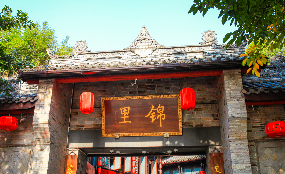
Chengdu
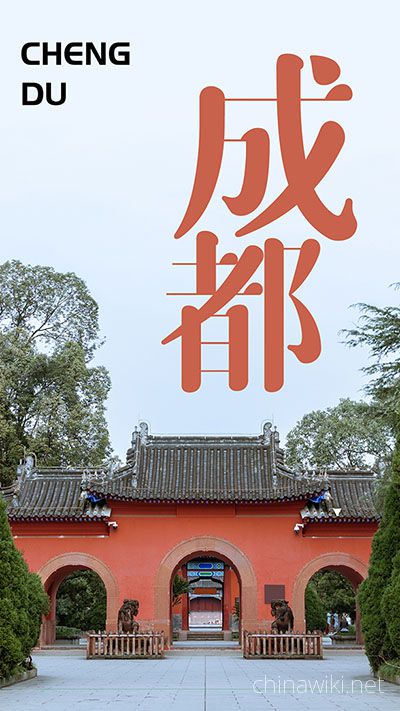
Cheng Du
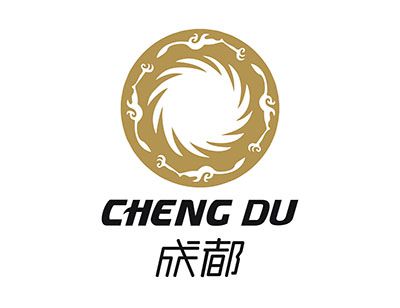
Cheng Du Logo
Weather in Chengdu
-
Luliang City, Shanxi Province
Luliang City, Shanxi Province - Shan Xi Sheng Lv Liang Shi
Views: 28 Time 2021-03-06 -
Benxi City, Liaoning Province
Benxi City, Liaoning Province - Liao Ning Sheng Ben Xi Shi
Views: 27 Time 2021-03-06 -
Daxinganling area of Heilongjiang Province
Daxinganling area of Heilongjiang Province - Hei Long Jiang Sheng Da Xing An Ling Di Qu
Views: 25 Time 2021-03-06 -
Yancheng City, Jiangsu Province
Yancheng City, Jiangsu Province - Jiang Su Sheng Yan Cheng Shi
Views: 30 Time 2021-03-06 -
Ganzhou City, Jiangxi Province
Ganzhou City, Jiangxi Province - Jiang Xi Sheng Gan Zhou Shi
Views: 42 Time 2021-03-06 -
Ji'an City, Jiangxi Province
Ji'an City, Jiangxi Province - Jiang Xi Sheng Ji An Shi
Views: 34 Time 2021-03-06 -
Jining City, Shandong Province
Jining City, Shandong Province - Shan Dong Sheng Ji Ning Shi
Views: 26 Time 2021-03-06 -
Meizhou City, Guangdong Province
Meizhou City, Guangdong Province - Guang Dong Sheng Mei Zhou Shi
Views: 62 Time 2021-03-06 -
Jieyang City, Guangdong Province
Jieyang City, Guangdong Province - Guang Dong Sheng Jie Yang Shi
Views: 27 Time 2021-03-06 -
Guigang City, Guangxi Zhuang Autonomous Region
Guigang City, Guangxi Zhuang Autonomous Region - Guang Xi Zhuang Zu Zi Zhi Qu Gui Gang Shi
Views: 44 Time 2021-03-06 -
Guiyang City, Guizhou Province
Guiyang City, Guizhou Province - Gui Zhou Sheng Gui Yang Shi
Views: 28 Time 2021-03-06 -
Zhongwei City, Ningxia Hui Autonomous Region
Zhongwei City, Ningxia Hui Autonomous Region - Ning Xia Hui Zu Zi Zhi Qu Zhong Wei Shi
Views: 28 Time 2021-03-06


